CASTING SEMINARS FOR AFSA42
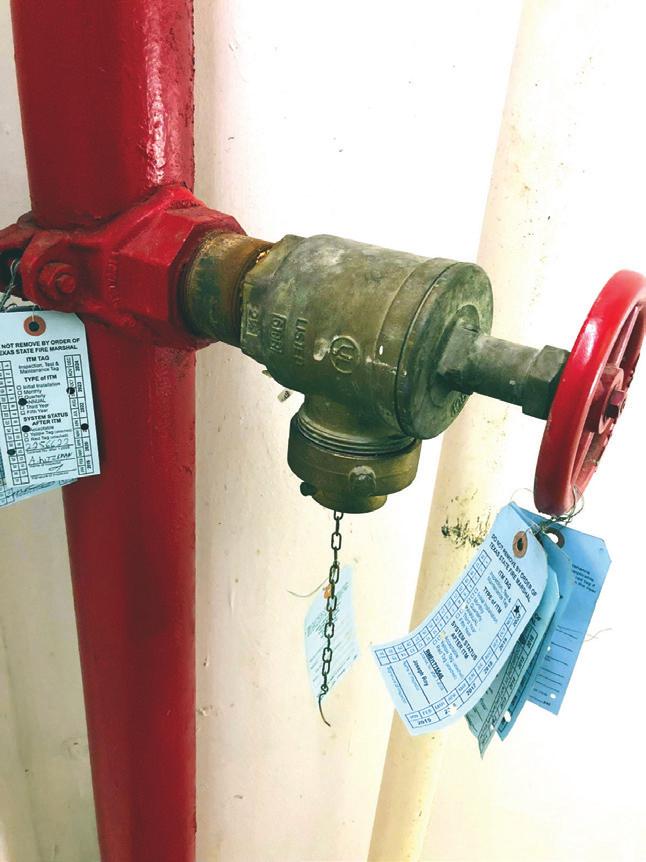

MAY/JUN 2023 NFPA14, 2024UPDATES 16
VOL 42/03
OFFICIAL PUBLICATION OF THE AMERICAN FIRE SPRINKLER ASSOCIATION
SPRINKLERAGE
Combustible Concealed Space Sprinkler
No Draft Curtains
Enhanced Listing
The Reliable Model KFR-CCS Sprinkler is designed for the protection of specific light hazard combustible and noncombustible concealed spaces requiring sprinkler protection. Its high, flat spray pattern provides ideal coverage of these spaces and its rugged 212° F fusible link design requires no shipping protector. The KFR-CCS is suitable for installation with CPVC pipe (wet systems) or steel pipe (wet, dry or preaction systems).

The KFR-CCS recently received an enhanced cULus Listing:
• Protection of concealed spaces with trusses without requiring draft curtains.
• Protection of concealed spaces with trusses up to 60 inches in height.
• Maximum sprinkler spacing up to 16 feet in concealed spaces with trusses or non-combustible insulation-filled joists.

• Matches industry leading hydraulic requirements for wet systems.
existing features:
• cULus Listed for areas of coverage up to 256 sq. ft.
• Nominal K-factor of 5.6 (80 metric)
• Fast response 212° F (100° C)
• cULus Listed
Proper sprinkler application made easier with designer-friendly bulletin 044.
Assembled & rigorously tested in Liberty, SC
reliablesprinkler.com/ccs
MODEL KFR-CCS
©2023 Reliable Automatic Sprinkler Co., Inc.






SimplifyingCorrosionPreventionindry-pipe andpre-actionfiresprinklersystems. Designed • Engineered • Built in the USA generalairproducts.com Protected by Vapor Pipe Shield Untreated Compressed Air After Two Years of Continuous Testing Fully mechanical & piped directly in-line between the air compressor and the dry pipe valve, Vapor Pipe Shield makes preventing corrosion simple, efficient, and highly cost-effective. How it Works
Stay compliant with a digital inspection approach
Maintaining building compliance can be complex, especially with multiple facilities on a single campus. That’s why we developed Xaap, a software as a service compliance reporting platform that lets you maintain, track and ensure system compliance, and manage your inspection reporting needs.
Whether you are a facilities manager handling some or all of your inspections, a service provider completing inspections, or an inspector, Xaap is the smarter approach to inspection reporting. With Xaap, you work from a single, centralized platform, easily sharing data with all stakeholders. Xaap also lets you bulk inspect, use barcoding for no additional fees, and offers deficiency imaging, saving your compliance team time and resources. Xaap reporting templates also meet code requirements for NFPA, TJC, DNV and CAN/ULC.

Barcoding Report repository Digital signature capture Permission setting Report templates Deficiency dashboard Deficiency imaging Multiple inspectors Offline mode
xaapbuildings.com Visiting NFPA? Stop by the Johnson Controls booth #801 to see Xaap in action and talk to our team of fire and life safety experts. Contact us today to learn how Xaap can help you with simply smarter compliance.




5 SPRINKLER AGE | MAY/JUN 2023
FEATURES 12 | CONVENTION BRINGS THE MAGIC OF EDUCATION AFSA42 OFFERS 64 TECHNICAL AND MANAGERIAL SEMINARS 16 | UPDATES TO NFPA 14, 2024 EDITION REVIEW OF THE FIRST AND SECOND DRAFT REPORTS 20 | A SHOWCASE FOR APPRENTICE SKILLS HONORING ROBERT L. MCCULLOUGH, FOUNDER OF THE NAC 22 | FIRE DEPARTMENT STANDPIPES AND EGRESS ADA COMPLIANCE IS A CRITICAL ASPECT OF STANDPIPE SYSTEM DESIGN 28 | SACRAMENTO VALLEY TRADE SHOW SUCCESS INDUSTRY EVENT OFFERS EDUCATION AND NETWORKING 30 | THE IMPORTANCE OF SEISMIC PROTECTION WHY SO MANY RULES? 32 | AFSA WINS BIG AT NCC MEMBERS TAKE HOME GOLD, SILVER, AND SAFETY AWARDS 34 | THE VALUE OF DIGITAL CODES AND STANDARDS THROUGH DIGITAL INNOVATION, NFPA CONTINUES TO PUSH THE NEEDLE FORWARD IN FIRE AND LIFE SAFETY 6 CHAIR’S MESSAGE 8 PRESIDENT’S REPORT 10 FLASHPOINT 36 HIGHER STANDARDS 38 AFSA NEWS 38 CALENDAR OF EVENTS 39 CHAPTER NEWS 39 ASSOCIATION NEWS 40 AFSA CHAPTERS 41 NEW MEMBERS 42 U.S. CONSTRUCTION 43 TECHNICAL CHALLENGES 44 PRODUCT NEWS 45 PEOPLE IN THE NEWS 46 INDUSTRY NEWS 46 INDEX OF ADVERTISERS MAY/JUN 2023 VOL 42/03 SPRINKLER AGE, (ISSN 0896-2685) is published bimonthly for $33.95 per year by the American Fire Sprinkler Association, Inc., 1410 East Renner Road, Suite 150, Richardson, Texas 75082. Periodicals postage paid at Dallas, Texas and additional mailing offices. POSTMASTER: Send address changes to SPRINKLER AGE, 1410 East Renner Road, Suite 150, Richardson, Texas 75082. Follow us on
ON THE COVER: Seminars abound at AFSA42 in Orlando this September. Also in this issue: standpipes.
CHAIR’S MESSAGE
One thing we all know by being in this business is that labor can make or break a job. If you have been doing this for longer than one year, you’ve seen it happen both ways! As most of you know, I did not grow up in this industry from the field. But , I have been blessed to be surrounded by some of the best operational minds in our industry. Some of the superintendents that I have had the privilege to work with taught me two valuable lessons:
1. How to run a job efficiently. This includes breaking up the big projects into smaller, bite-sized pieces to make sure it stays on budget (or ahead) right from the very beginning, planning ahead and staying ahead, and always teaching the apprentices and fitters something new every day. Also, to do all of this safely.
2. That the best use of my time for the company is to stay off the 300 machine! I thought I was doing fine, but evidently not.
Some of these great mentors of mine are Larry Sims, Paul Durham (God rest his soul), Bill Boyle (whose son Billy threw me off a job once because I was just getting in the way), Chris Mahanes, and many, many others. They all had one thing in common—they learned the trade the right way and continued learning throughout their entire career. AFSA is the avenue to accomplish this. Whether it’s our apprenticeship program, Leadership Ladder (which is currently being updated to a digital format) or our ITM program (with a new class starting up this Fall), your field personnel will continue to grow and learn how to run jobs efficiently and profitably for your company. By the way, AFSA has been doing this for a very long time! We’ve been training our field personnel since our inception in 1981, and our National Apprentice Competition is celebrating its 30th anniversary this year. That’s definitely something to be proud of!
To see the National Apprentice Competition finals, attend AFSA42, which is quickly approaching. It will take place in Orlando, Florida, September 6-9 at the Signia by Hilton Orlando Bonnet Creek. The seminar lineup is one of the best our industry has ever seen, with tremendous topics taught by the best instructors in our industry. See this issue for details.
Our technical theme in this edition is on standpipes. My dad is a retired firefighter from New York, and I was a volunteer for 40 years before hanging it up. Standpipes are the lifeline for firefighters. If they don’t operate properly, firefighters could die. Just look at the One Meridian Plaza fire in Philadelphia for one horrific example. I represented AFSA on the NFPA 14 committee for many, many years before handing the seat to Steve Leyton, who has done a much better job with it than I ever did. (Steve will be a presenter at AFSA42 and is someone you want to hear.) Sitting on that committee, while understanding its importance to the firefighting community, was an honor—a privilege that came along with a tremendous responsibility. I was on the committee when we took the required pressure at the top from 65 psi to 100 psi (and almost 150 psi). I know that due to this change, lives were saved if for no other reason than to make the manufacturers of firefighting nozzles aware that most of their nozzles needed more pressure than the standard required. Fire department personnel became more aware of the situation while the manufacturers made modifications to match the standard requirements. I represented AFSA on most of the other committees I have served on throughout my career. If you are interested in representing AFSA, email or call me.
May God continue to watch over this Association today and throughout 2023. May He also bless you always and in all ways. n

EDITORIAL: 214-349-5965
BOB CAPUTO, CFPS, Publisher, ext. 124 bcaputo@firesprinkler.org
D’ARCY G. MONTALVO, Editor, ext. 115 dmontalvo@firesprinkler.org
ADVERTISING: 214-349-5965
SYDNEY RICHARDSON, Communications Specialist, ext. 134 srichardson@firesprinkler.org
CIRCULATION: 214-349-5965
D’ARCY G. MONTALVO, Editor, ext. 115 dmontalvo@firesprinkler.org
AFSA BOARD OF DIRECTORS
JACK A. MEDOVICH, P.E., Chair, 804-222-1381
LINDA M. BIERNACKI, First Vice Chair, 318-841-0330
PAUL DELORIE, Second Vice Chair, 603-432-8221
ROD DIBONA, Treasurer, 605-348-2342
JEFF PHIFER, Secretary, 803-438-2994
TED WILLS, Immediate Past Chair, 610-754-7836
LYLE HALL, 858-513-4949
CHRIS JOHNSON, 727-581-9339
R. DONALD (DON) KAUFMAN, 505-884-2447
MICHAEL F. MEEHAN, 757-213-3660
E. PARKS MOORE, P.E., 251-473-6000
JAY STRICKLAND, 301-474-1136
WAYNE WEISZ, 209-334-9119
AFSA LEADERSHIP
BOB CAPUTO, CFPS, President, ext. 124
JOHN AUGUST DENHARDT, P.E., FSFPE, Vice President, Engineering & Technical Services, ext.121
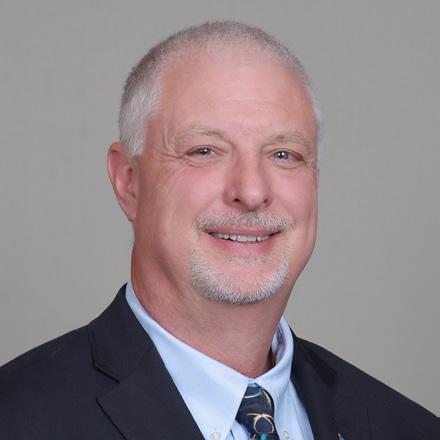
MARLENE M. GARRETT, CMP, Vice President, Meeting & Education Services, ext. 118
MEDA MERRITT, Senior Director, Membership Servies & Chapter Support, ext. 133
MELISSA ATHENS, Director, Finance & Administration, ext. 112
LESLIE CLOUNTS, Director, Education Services, ext. 130
ROGER GRAGG, Director, Marketing & Information Technology, ext. 116
Sprinkler Age is devoted to the professional development of the fire sprinkler industry. Deadline is 1st of the month preceding publication.
Published by American Fire Sprinkler Association, 1410 East Renner Road, Suite 150, Richardson, TX 75082. Call (214) 349-5965, FAX (214) 343-8898, or email sprinklerage@firesprinkler.org for information.
Copyright © American Fire Sprinkler Association, Inc. All rights reserved. PRINTED IN USA. Unless expressly stated otherwise, all editorial and advertising material published is the opinion of the respective authors and/or companies involved and should not be construed as official action by or approved by Publisher or the Association.
Sprinkler Age is a membership benefit, provided free of charge to AFSA members. For information on non-member and/or foreign subscription rates, call (214) 349-5965.
ABOUT AFSA MEMBERSHIP
AFSA annual membership dues are a sliding scale for Contractors and Associates and a flat fee for Authorities Having Jurisdiction. (Members receive a free subscription to Sprinkler Age.) Write or call AFSA for membership information. See AFSA’s website at firesprinkler.org.
6 SPRINKLER AGE | MAY/JUN 2023
JACK A. MEDOVICH, P.E. AFSA BOARD CHAIR
Rest assured—when you work with any of our ISO-certified fabrication facilities, you’re benefitting from products and services that are held to industry-leading quality specifications.



VISIT US ONLINE AT FERGUSON.COM/FIRE
©2023 Ferguson Enterprises, LLC 0323 5091708
PRESIDENT’S REPORT

The beginning of 2023 brought optimism that the U.S. would avoid a recession. Many of our members still have strong backlogs of work, with a severe shortage of manpower being the greatest challenge to growth in our industry. Despite the drop in material prices and increase in availability over 2022, inflation has continued to lead the daily headlines. International tensions with China and Russia, along with problems in the banking sector, have dulled that optimism for many of us. As I write this column, I cannot help but wonder if the economy is headed for a recession and how that potential, in addition to these outside issues, will impact our industry and our members.
One thing is obvious, and that is money will be tighter in the months to come, and the cost of money will be higher. This will certainly have an impact on small businesses and on new construction project funding. We must be prepared for change and ready to pivot strategies to maintain the health of our businesses.
I hate being the harbinger of bad news, but I believe there should be great concern related to the efforts of China and Russia toward global realignment and away from the U.S. dollar. While there is little we can do individually to stop this potential threat, I hope our government has its eyes wide open and can rally back the strength and worldwide respect for the U.S. and the stability of the U.S. dollar in the global market. Competition makes us stronger, and this is a competition our nation must win for our economic health and that of the entire world.
I’ve heard over a thousand times that all politics is local. I have always tried to ignore what is going on nationally and globally, intent on focusing on what is happening to me and my business and handling what I could control while letting the things that were outside of my control handle themselves. I’m not sure we can ignore the outside influences right now, as it feels like we’re on the precipice of a recession that I hope and pray will not come. Unfortunately, hoping and a positive attitude will not change whatever economic issues are on the horizon. I want to encourage all our members to stay focused, hope for the best, and be prepared for change.
If your business depends on a relationship with a lending institution for a working line of credit, talk to your banking representative to know what they’re thinking and where their institution is headed—don’t get caught flat-footed! If you work in a state where pre-liens are required to protect your rights, make sure you are filing paperwork and keeping receivables on a short leash. During tough times, cash is king and can be difficult to hang onto as suppliers and lending institutions tighten credit limits and terms.
G. Michael Hopf wrote in his book, Those Who Remain, “Hard times create strong men. Strong men create good times. Good times create weak men, and weak men create hard times.” Hopf’s view of the cycle of strength and weakness can be seen in how older generations see those who follow, who seem to have it easier or have
less respect for their elders, and who are less patriotic than prior generations. We created the next generation and worked hard to make it easier for them, so they didn’t have it as tough as we did. We didn’t do them any favors; it would seem. Ask anyone of the greatest generation if they believe this to be true.
This cycle also applies to economics. We’ve had it good economically for a very long time, and while nothing good lasts forever, neither does anything bad. We can survive the impending negative and difficult economic cycle with eyes wide open and some careful business planning, but the time to prepare is now. Don’t wait and see. Don’t let your business get culled from the herd. We need every AFSA member to be strong and survive whatever comes our way. Even if we don’t see a recession, being prepared is always a great business strategy.
I can recall many tough economic downturn cycles, especially around 1982. Money was expensive, projects were being canceled, and everyone in the company I worked for at the time took a 10-percent pay cut to help keep the company afloat. We were bidding and taking work below our break-even costs to keep the lights on and live through those tough times. By the way, that company is still here today and dominates its market because it never gave up on its core values and the support of its people.
My goal is to help our members be as strong as possible, to keep our industry strong and our association stronger. I don’t have a crystal ball and cannot predict the future any better than any of you or the talking heads I see on the news. But I can encourage our members to be prepared for the potential of rough seas ahead while remaining hopeful the economic storm will pass, and we will continue to enjoy smooth sailing.
I have always heard that sprinkler contractors don’t have time for training when times are good. When times are bad, we don’t have the money for training. AFSA has the education you need for your people to be stronger and help your business through whatever comes our way. If we don’t see a recession, you’ll need more people trained for the additional work available. If we do see a recession, you will need the best-trained people who can do more with less—to help you through a downturn. AFSA leads the way in educating the people needed to deliver the solution! Thank you for your continued membership and support. We hope to see all of you in Orlando at AFSA42. n
BOB CAPUTO, CFPS AFSA PRESIDENT
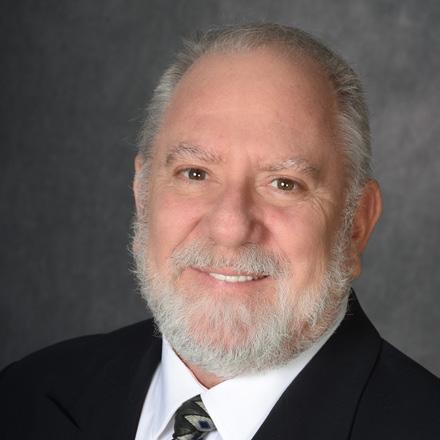
8 SPRINKLER AGE | MAY/JUN 2023
coating to help ensure reliable flow for years.


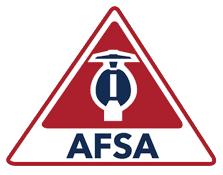

It’s all available to you from a single, responsive supplier…making your pipe selection job much easier.
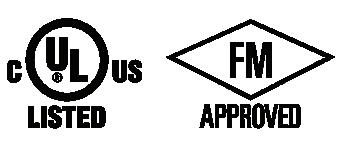

Plants located coast-to-coast... for fast delivery anywhere! BullMooseTube.com | 800.325.4467 Our NEW plant in Sinton, Texas produces 5 , 6 , 8 , and 10 SPRINKLER PIPE. Our new mill expands our overall product capabilities, giving us the most comprehensive range of sprinkler pipe in the industry: • Diameters from 1” to 10” NPS. • Schedule 10, 30, 40, and Eddy Flow (size dependent)
Lengths
25’,
a
EddyGuard
•
up to
with custom lengths available Plus
variety of finishing options — not to mention our exclusive
II® MIC antimicrobial
FLASHPOINT
While standpipe systems may seem very simple and are often considered an afterthought in the overall design of a fire protection system, they are critical components that can result in the loss of life if not designed and installed properly.
Standpipe systems are installed to help response personnel deploy hose lines quickly while providing adequate water pressure and volume. They provide 21/2-in. connections for heavy stream use by fire departments, 11/2-in. connections for use by trained personnel during the initial response, or both.
Moving a heavy fire hose up through a building takes time, and time costs lives in a fire emergency. Having fixed hose connections in place allows firefighters to quickly carry empty hoses to each stairwell. This keeps stairways clear and makes it safer for exiting occupants. The use of standpipes also reduces friction losses due to hose length or kinking.
Standpipe systems must be designed and installed per NFPA 14, Standard for the Installation of Standpipe and Hose Systems. The Engineer of Record and designer must have detailed discussions with the responding fire department and all other Authorities Having Jurisdiction (AHJs) on what they need from the standpipe system. NFPA 14 makes this point clearly in Section 5.1.2: The AHJ shall be consulted regarding the required type of system, class of system, and special requirements.
The annex provides additional details:
The need for a standpipe system and some design elements will normally come from the jurisdiction’s adopted building code and fire prevention code. Design of standpipe systems should include consideration of local fire department suppression tactics, hose size, hose length, and types of nozzles used.
These discussions must be documented to protect all parties. The design requirements for the specific project must be clearly detailed on the shop drawings. This will enable all involved in the installation, commissioning, and ITM (inspection, testing, and maintenance) activities to understand the system performance requirements.
What happens when this coordination and agreement does not occur? It may result in system failure and loss of life.

One example of a standpipe failure is the fire that occurred at One Meridian Plaza in Philadelphia, Pennsylvania, on February 23, 1991. It began on the 22nd floor and raged out of control for 19 hours. Philadelphia firefighters valiantly fought the blaze but struggled due to a lack of power in the skyscraper and insufficient water pressure from the building standpipes. Three firefighters died after becoming disoriented by heavy smoke. The fire was only brought under control once it reached the 30th floor, which was one of the few floors with sprinklers installed. In the end, this 12-alarm fire was controlled by only 10 sprinklers.
A report issued by the Federal Emergency Management Agency, TR-049, High-Rise Office Building Fire, One Meridian
Plaza, detailed the fire cause, response, and failures. The following deficiencies were identified for the standpipe system:
Improperly installed standpipe valves provided inadequate pressure for fire department hose streams using 13/4-in. hose and automatic fog nozzles. Pressure reducing valves were installed to limit standpipe outlet discharge pressures to safe levels. The PRVs were set too low to produce effective hose streams; tools and expertise to adjust the valve settings did not become available until too late.
When this building was constructed in 1972, the minimum residual pressure was 65 psi at the most remote outlet. This fire demonstrated that this pressure is inadequate for supporting modern firefighting equipment. It was changed to 100 psi in the 1993 edition of NFPA 14. This fire also emphasized the importance of proper inspection and testing that would have revealed the problem with the PRV settings. NFPA 25, Standard for the Inspection, Testing, and Maintenance of Water-Based Fire Protection Systems, was created in 1992 to address these issues.
A memorial was unveiled on October 21, 2009, honoring the three firefighters who died in the fire: Captain David Holcombe, Firefighter Phillis McAllister, and Firefighter James Chappell. As fire protection system professionals, we have a duty to remember their sacrifice and do whatever we can to prevent future incidents. n
 JOHN AUGUST DENHARDT, P.E., FSFPE AFSA VICE PRESIDENT OF ENGINEERING & TECHNICAL SERVICES
JOHN AUGUST DENHARDT, P.E., FSFPE AFSA VICE PRESIDENT OF ENGINEERING & TECHNICAL SERVICES

10 SPRINKLER AGE | MAY/JUN 2023
Source: Wikimedia Commons.


Knock out the competition with the shortest, lightest, and only all-stainless steel backflow preventer in the industry. • Free shipping on ALL valves • 24-hour shipping on select orders Shop Fire System Solutions TODAY Only at BackflowDirect.com MEET THE NEW FEATHERWEIGHT CHAMP
CONVENTION BRINGS THE MAGIC OF EDUCATION
AFSA42 OFFERS 64 TECHNICAL AND MANAGERIAL SEMINARS
This year, the American Fire Sprinkler Association (AFSA) heads to Orlando, Florida to show the Sunshine State North America’s largest fire sprinkler exhibition at AFSA42: Convention, Exhibition & Apprentice Competition, to be held September 6-9, 2023. Learn and earn everything you need while taking in the fun Floridian sun! AFSA offers the best education, with industry subject matter experts (SMEs), providing you with CEUs, CPDs, Contact Hours, and Florida-Approved credits with over 81 hours of training across 64 seminars. To make things better, the seven seminar tracks return, making it easy to quickly find what you need, when you need it.

“Join us in Orlando this fall and ignite your passion for the fire sprinkler industry,” comments Marlene Garrett, CMP, AFSA’s vice president of meetings & education services. “Connect with experts, learn from the best, and elevate your company to new heights. Don’t miss out on this opportunity to light the spark that will fuel your success.”
Wondering which track is best? Customize your seminar slate by browsing the tracks below. Sample seminars accompany each track description. Don’t feel stationary to one track; mix and match to customize the learning experience desired at convention. This year’s highlights include the ever-popular “Ask the Experts” interactive seminar featuring a Q&A with the best in the fire sprinkler industry. AFSA42 offers the education you want and need to maintain your certifications and licenses.
INSTALL/DESIGN TRACK
The Install/Design track focuses on the design and installation of water-based fire protection systems. Seminar topics include design approaches for high-rise standpipe systems; smart fire pump systems; special sprinklers; updates to various standards including NFPA 14, Standard for the Installation of Standpipes and Hose Systems, and NFPA 20, Standard for the Installation of Stationary Pumps for Fire Protection
Seminars in this track include “NFPA 13, Standard for the Installation of Sprinkler Systems, 2025 Edition” by Kevin Hall, M.Eng., P.E., ET, CWBSP, PMSFPE; AFSA. The 2025 edition of NFPA 13 is currently up for revision and this seminar will review the changes that resulted from the first and second draft meetings. This seminar will specifically discuss revisions that were made by the installation and discharge committees of NFPA 13.
INSPECTION, TESTING, AND MAINTENANCE (ITM) TRACK
AFSA’s ITM track provides information for water-based inspectors and focuses on NFPA 25, Standard for the Inspection, Testing, and Maintenance of Water-Based Fire Protection Systems, and NFPA 915, Standard for Remote Inspections. It includes a seminar based on the world’s largest ITM database, a seminar on private service mains testing, and more.
One seminar being offered in this track is “NFPA 25: An Interactive Evaluation of I&T Results” by Terry Victor, SET; Johnson Controls Fire Protection. NFPA 25 includes requirements for inspecting and testing systems and components, but many inspectors aren’t sure how to record and report what they’ve observed or tested. In this session, attendees will hear about new examples of inspection and test results and findings and view pictures of systems and components illustrating many of the gray areas of NFPA 25. Attendees will also be able to offer their opinions on the systems/components and share their examples of uncertainty regarding NFPA 25.
“OTHER” TECHNICAL TRACK
This track includes seminars on other technical topics of interest to those in the fire protection industry: fire science and suppression, fire losses and their impact on code, participating in the standards development process, special hazards, fire alarm systems, and proposed standard NFPA 200, Standard for Hanging and Bracing of Fire Suppression Systems.
12 SPRINKLER AGE | MAY/JUN 2023
AFSA and the Signia by Hilton Orlando Bonnet Creek welcome guests to AFSA42 for education, networking, and fun! Enjoy the lazy river or play a round of golf amid all the convention action.
In this track, join Steven Scandaliato, SGC, LLC, for a seminar on “Special Hazards & Foam: A Pragmatic Approach to NFPA 11.” There are significant issues with using AFFF, including a ban on foams that contain fluorine. As a result, several new products such as fluorine-free foam concentrates and technologies such as self-expanding firefighting foam have entered the market, and with them, new rules, design methods, and system costs. This seminar is based on NFPA 11, Standard for Low-, Medium-, and High-Expansion Foam, with emphasis on foam in traditional and special hazards fire protection. Information will be presented on the advantages and disadvantages for each, giving the contractor a clear understanding of what best fits the hazards and project restraints.
BUSINESS MANAGEMENT TRACK
This track is intended for management staff and offers seminars on field supervisory training, adapting to the labor shortage, communication, design management, fostering employee engagement, construction contracts, and more.

“Lessons Learned to Reduce Your Liability Risks” by William Koffel, Koffel Associates, will be offered within this track. Based upon actual legal cases, this presentation will identify ways to minimize the likelihood of being included in a lawsuit. If identified as a defendant, the presentation will identify actions to implement to help defend any claims. Lastly, the seminar will identify mistakes others have made and how it impacted the outcome of the legal proceeding. Participation in the course
should help to reduce the likelihood of being named a defendant and limit liability if named as a defendant.
NEXTGEN TRACK
AFSA’s Next Generation Initiative (NextGen) will sponsor several AFSA42 seminars covering topics such as recruiting, maintaining motivation, and developing connections through various forms of social media. NextGen welcomes everyone with an interest in the next generation of fire protection professionals, regardless of age. For more information on AFSA’s NextGen, visit www.firesprinkler.org/nextgen or stop by the AFSA booth at AFSA42 to speak with NextGen members.
This year, NextGen will present “Where is Your Story?” by Lauren Rice, ServiceTrade. Ticktocked, snapped, linked, faced, tubed, and tweeted—there are more ways to tell your story than ever before. Instead of dismissing the idea of sharing the story of your brand through these channels as folly, learn from companies like yours that are using them to attract new employees and prospective customers. Rice will guide a study of what works in social media for the fire protection industry and teach you how to turn your daily work into a content engine to drive positive interaction with the people you most want to engage.
AHJ TRACK
AFSA42 welcomes Authorities Having Jurisdiction (AHJs) for a full day on September 9. In the morning, seminars are offered on a variety of topics including working with the media,
13 SPRINKLER AGE | MAY/JUN 2023
Need Backflow Repair Parts? BAVCO IS YOUR SOLUTION! West Coast - Long Beach, CA (800) 458-3492 • info@bavco.com Central - San Antonio, TX (866) 318-0274 • txinfo@bavco.com East Coast - Charlotte, NC (844) 202-1618 • ncinfo@bavco.com Your Complete Source for Backflow Parts & Accessories www.bavco.com • Complete Inventory • Product Knowledge • Same Day Shipping • In Stock When You Need It
customer communications, and a free plan review. In the afternoon, AHJs are invited to tour the exhibition hall free-of-charge to view the latest products and services for the sprinkler industry and to watch the National Apprentice Competition.
Keith Heckler with the National Fire Academy will present “Plan Review”— a seminar for AHJs taught by an AHJ at AFSA42. It will cover the necessary information for an NFPA 13 sprinkler shop drawing submittal so a formal review can be commenced. Expect to learn why the plan information is more than data presented on a design and installation document. Each subject line will be discussed in order to explain the rationale for the requirement and its long-term benefit to the building owner, sprinkler contractor, community, ITM service providers, future fire inspectors of the building, and fire investigators.
SIGNIA BY HILTON ORLANDO BONNET CREEK HOSTS AFSA

Signia by Hilton Orlando Bonnet Creek is a newly renovated resort offering an elevated experience for AFSA42 attendees. From a brand new lobby to elevated guest rooms, signature dining and innovative meetings, guests can enjoy memorable family and business experiences and best-in-class travel in iconic Orlando.
The resort offers luxurious rooms, fine dining, Waldorf Astoria Spa, a state-of-the-art fitness center, the top-rated Waldorf Astoria Golf Club, FunZone arcade, and a lagoon-style pool complete with private cabanas and a waterslide!
AFSA42 guests should ensure they are fully registered in AFSA’s room block at Signia by Hilton Orlando Bonnet Creek— this grants access to the ever-popular networking meals. Enjoy breakfast and lunch with fellow industry professionals during each full day of the convention—make new connections and revive old ones while you enjoy a delicious meal!
The AFSA group rate for Signia by Hilton Orlando Bonnet Creek is $199 per night plus tax and includes complimentary internet in guest rooms. Reservations may be made online during the convention registration process at www.firesprinkler.org/book. Group rates are available for stays from September 2-12, 2023, but reservations must be made by Friday, August 4, 2023, to secure AFSA convention group rates. After August 4, room rates are based on availability.

HOTEL RESERVATION & ATTENDEE LIST ALERT
AFSA is made aware of third-party vendors soliciting AFSA exhibitors and attendees posing as our housing vendor or attendee list distributor. These companies mislead you to think they are working on our behalf. Companies that use this tactic include Exhibitor Hotel Reservation Services (EHR), Global Housing, and National Travel Associates. They are not endorsed by or affiliated with AFSA or its show. Entering into financial agreements with such companies can have costly consequences such as no hotel reservations, no free networking meals, no complimentary internet access, or a mailing list. Please note attendee lists are distributed onsite. To receive full AFSA hotel benefits, book directly with the hotel by phone or using the link found on AFSA’s convention website, www.firesprinkler.org/AFSA42.
MAGIC AND ILLUSIONS
AFSA42 attendees should prepare to be dazzled with this year’s theme of “Magic and Illusions”! As if being at the steps of theme parks, nationally recognized attractions, and water parks isn’t magical enough, AFSA will cast a spell on attendees with an enchanting schedule.
Convention gears up with an opening party on Wednesday, September 6, to be held at the Wizarding World of Harry Potter™—Hogsmeade™. Enjoy an exclusive dinner held at Universal CityWalk™, explore Bob Marley—A Tribute to Freedom, Pat O’ Brien’s® Orlando, and CityWalk’s Rising Star™, then head to Hogsmeade Village for exclusive AFSA-only access to attractions!
Several other social events are planned between seminars and exhibition hall hours, including the Exhibition Grand Opening featuring delicious appetizers and cocktails on Friday, September 8, and a thrilling “Magic and Illusions” Awards Party on Saturday, September 9. Held at the Signia by Hilton Orlando Bonnet Creek, guests will enjoy dinner, drinks, illusions, magic tricks, and the crowning of the 30th Annual National Apprentice Competition’s top apprentice.
AFSA42 SPONSORSHIP AND EXHIBITOR OPPORTUNITIES
AFSA42 is expected to attract over 600 decision-makers from all corners of the country, many of whom are looking for
14 SPRINKLER AGE | MAY/JUN 2023
The newly renovated Signia by Hilton Orlando Bonnet Creek features a beautifully reimagined lobby and guest rooms that offer a stylish environment with premium amenities and plush bedding.
VENT TO PREVENT VENT TO PREVENT

NFPA 13 requires the addition of an air vent on each wet pipe fire sprinkler system that utilizes metallic pipe to help mitigate internal pipe corrosion. PURGEnVENT valves come in a variety of styles. The 7910MAV is a manual air vent that has the smallest footprint on the market. The M7900AAV features an 7900V automatic air vent that releases excess air while the system is in operation. It also includes an isolation valve and purge valve. The purge valve helps air exit the system faster when filling, and it can be used as a vacuum break when draining the system. The vacuum break helps the system drain faster and protects gaskets from being dislodged on other system components when draining. The M7930ECA includes a pipe cap for easy installation, and the M7950ILV features an air separation chamber that installs into the main branch line for applications with difficult to reach system high-points.
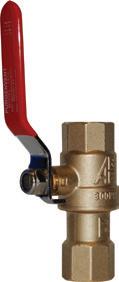




SCANFOR MOREINFO www.agfmfg.com
AAV ILV MAV
UPDATES TO NFPA 14, 2024 EDITION
REVIEW OF THE FIRST AND SECOND DRAFT REPORTS
KEVIN HALL, M.ENG., P.E., ET, CWBSP, PMSFPE | AMERICAN FIRE SPRINKLER ASSOCIATION
NFPA 14, Standard for the Installation of Standpipe and Hose Systems , just finished its most substantial revision cycle since the 1993 edition. The 2024 edition will include a reorganization of the standard, a comprehensive overhaul of vertical standpipe system zones and required redundancies, and several new requirements for hose connections. Although this revision cycle was delayed in 2020, the revamping of NFPA 14 ultimately benefited from the additional time and numerous hours logged by task groups and the technical committee.
REORGANIZATION
There are many factors that contribute to the need to reorganize standards. Except for a reorganization cycle, proposals are typically reviewed with a narrow focus and not within the context of the whole document, so several cycles after a reorganization, requirements will land in different sections or chapters based on the will of the committee until the standard is reorganized once again.
For the 2024 edition of NFPA 14, the reorganization included the creation of three new chapters—Chapter 4, General Requirements; Chapter 6, Underground; and Chapter 14, Modifications to Existing Systems—and properly grouping installation and design requirements. The new general requirements chapter provides the structure for the rest of the document. For the installation chapters, requirements related to the protection of piping
and the location of hose connections were included. For the design chapter, the committee focused on minimum and maximum pressure requirements, minimum flows, pipe sizing, vertical standpipe system zones, and the number of fire department connections (FDCs). Within Chapter 4, there are pointers to Chapter 13, Buildings Under Construction; Chapter 14, Modifications to Existing Systems; and Chapter 15, Maritime Systems. The remaining sections of Chapter 4 provide the basis of design for standpipe systems. NFPA 14 now requires the local fire department to be consulted to determine their maximum pumping capabilities, which is necessary to apply the definition of “very tall buildings” and the new requirements for vertical standpipe system zones and redundancies. In addition to pumping capabilities, the local fire department should also confirm the location and type of FDCs used on a building.
VERTICAL STANDPIPE SYSTEM ZONES AND REDUNDANCIES
Standpipes are often referred to as a firefighter’s lifeline in the building. Given the importance of the system’s function, redundancy is key when designing and installing the standpipe system. For other water-based fire protection systems, the FDC’s sole purpose is to supplement the water supply. However, for standpipe systems, the FDC could be the primary or secondary water supply. To ensure proper redundancies, the standpipe system demand must be compared with
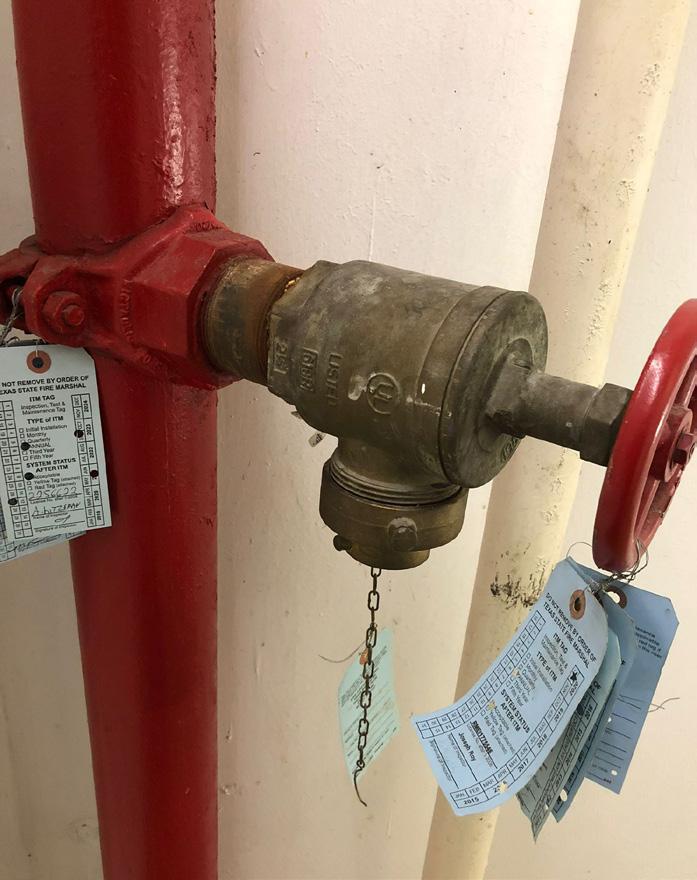
the fire department’s pumping capabilities. Previous editions of NFPA 14 used unclear terminology “zones above the low zone” to determine if redundant feed pipes or water supplies were required, but the 2024 edition classifies the vertical standpipe system zone as either “up to the level of fire department pumping capabilities” or “above the level of fire department pumping capabilities.”
Zones above the level of the fire department’s pumping capabilities pose unique fire protection challenges, and these zones must be supplied with an auxiliary water supply. That water supply can come in the form of a high-level water storage tank or a backup fire pump. Additionally, each zone must be supplied with a dedicated
16 SPRINKLER AGE | MAY/JUN 2023
The revised NFPA 14 includes a comprehensive overhaul of vertical standpipe system zones and required redundancies, and several new requirements for hose connections.
express riser or express risers can supply multiple zones where two or more are provided to supply all the standpipes in the zone. Since redundancy is provided in the form of additional automatic supplies, the FDC for zones above the level of the fire department’s pumping capabilities is not required. While it may seem counterintuitive to not provide an FDC, the design considers that two automatic redundant supplies would have to fail before the fire department’s pumping capacity would overcome the check valve. Moreover, the FDC is immaterial since the fire department would not be able to provide the appropriate flow and pressure to supply the zone.
For zones up to the level of the fire department’s pumping capabilities, the redundancy comes from the FDC. Should the automatic water supply fail, the fire department would be able to supply the appropriate flow and pressure at the FDC inlet. Based on that principle, the redundancies required for zones above the level of the fire department’s pumping capabilities are not necessary for zones within the fire department’s pumping capabilities.


HOSE CONNECTIONS

The last major changes included the requirements for hose connections. While hose connections have always been required to be listed, the standard now makes a specific reference to UL 668, Hose Valves for Fire Protection Service , as the listing standard. This may seem like a simple clerical change, but UL 668 was recently updated to include a requirement to publish friction loss data and the equivalent length of the listed valve in the manufacturer’s data sheets.



The other significant change is the requirement for hose connections to have their threads “protected.” The word choice here is important as earlier editions required a cap, but threaded caps are not a part of the listed hose valve assembly. Thread protection does not need to hold pressure, as testing
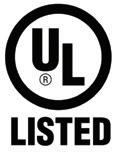
17 SPRINKLER AGE | MAY/JUN 2023
www.fayettepipe.com Fayette Pipe 2282 University Drive Lemont Furnace, PA 15456 724.438.7600 sales@fayettepipe.com AFFORDABLE AVAILABLE RELIABLE Now Offering 100% American Made and Melted Schedule 10 Pipe Quality hydrotested Schedule 10 A795/ A135 Type E Grade A ERW steel pipe for new construction and retrofit fire sprinkler systems Pipe and Diameter Sizes: 1”- 2-1/2” Pipe Length Sizes: 10’ up to 21’ Available in beveled or grooved ends UL listed and FM approved Ask about our Schedule 40 Black Steel Pipe, Galvanized and Black Steel Nipples
activities should be performed against a test cap and not the plastic or brass cap provided with the system. More importantly, this change allows thread protector doughnuts—similar to the plastic protection provided on threaded ends from the fabrication shops—in lieu of a full cap.
Where a full cap is provided, the committee now requires that the cap be rated for the maximum pressure applied at the hose connection or provided with a 1 / 8 -in. hole. This

specific requirement is being challenged through a certified amending motion (CAM). The other restriction revolved around lockable hose connection caps. While this revision ultimately failed the ballot and was only included in the second draft report as a committee comment, a task group was formed to develop a tentative interim amendment (TIA). The TIA states that unless lockable hose caps are required by the fire code official and local fire department, lockable hose caps are not

permitted. Lockable caps on standpipe hose connections pose a risk to fire and life safety when they are installed without adequate coordination with the appropriate stakeholders, and their presence could delay the firefighting operations of the responding fire department and place the firefighter, occupants, and building structure at risk. These new requirements are necessary to regulate that risk.
Everyone should be encouraged to review the complete first and second draft reports at www.nfpa.org/14next, but it should be noted that the revision cycle is not yet complete! There are multiple CAMs that will be argued at the NFPA Technical Meeting in June. Be sure to check out my column “Higher Standards” on page 36 in this issue for a complete voting guide with AFSA’s positions on all the amending motions. n
For use with CPVC plastic pipe and IPS steel pipe. UL Listed. Eaton.com/Fig-29.
UL listed as a restraint for lateral bracing and FM approved as a sway brace attachment. Eaton.com/Fig-74.
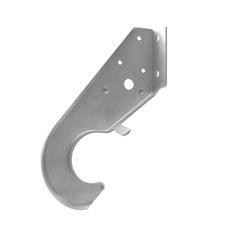


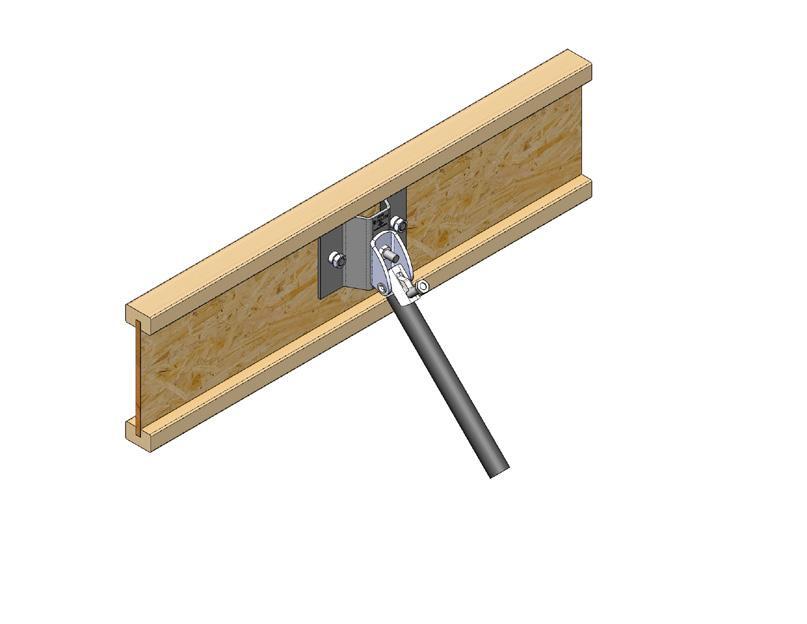
TOLBrace fire protection software
Free to download and simple to use. Create complete submittal package for fire sprinkler systems.
Eaton.com/tolbrace
ABOUT THE AUTHOR: Kevin Hall, M.Eng., P.E., ET, CWBSP, PMSFPE, is the senior manager of engineering and technical services for the American Fire Sprinkler Association (AFSA). He is a member of several National Fire Protection Association (NFPA) technical committees responsible for developing the model codes and standards, including, NFPA 1 Fire Code, NFPA 13/13R/13D Installation of Sprinkler Systems, NFPA 20 Installation of Stationary Fire Pumps for Fire Protection, NFPA 30 Flammable and Combustible Liquids Code, and NFPA 915 Remote Inspections. Hall also represents AFSA on numerous UL standard technical panels responsible for revising and maintaining the product standards used in the sprinkler industry. He is a registered professional engineer in Delaware and Maryland, NICET III certified in water-based system layout, a certified water-based system professional through NFPA, and a professional member of the Society of Fire Protection Engineers (SFPE). Hall earned his Bachelor of Science and Master of Engineering degrees from the University of Maryland College Park in fire protection engineering. In 2021, he was recognized as one of SFPE’s “5 Under 35” award recipients. Prior to his association and committee work, Hall worked for Reliance Fire Protection in Baltimore, Maryland as a project manager overseeing projects of various sizes and complexity for the Contracts Division.

18 SPRINKLER AGE | MAY/JUN 2023
AD312010EN Eaton.com/FPS
TOLCO solutions are designed to help speed install and reduce complexity while providing safe, reliable solutions to help protect critical systems
construction. UL listed. Eaton.com/Fig-131.
Fig. 29 double offset hanger and restrainer
Fig. 74 upper attachment
Model EG-100

ESFR Sprinkler Guard
FM Approved Sprinkler Guard Protects In-Rack
ESFR Storage Sprinklers
Protect in-rack sprinklers with the FM Approved Model EG-100 ESFR Sprinkler Guard! This hard-wire steel cage surrounds the ESFR sprinkler and protects it from damage.

This can occur in areas with a high degree of human or mechanical activity at a low elevation, such as in warehouses or in-rack storage areas.



Our ESFR sprinkler guards are approved for use with VK506, VK510, and VK514 Viking sprinklers and are available in painted red or chrome finishes.
Learn more and shop online at supplynet.com.
Viking’s revolutionary Sprinkler Selector ensures that you can find the right sprinkler for the job — every time. Get started today by visiting webtools.vikingcorp.com/sprinklerselector
A SHOWCASE FOR APPRENTICE SKILLS
HONORING ROBERT L. MCCULLOUGH, FOUNDER OF THE NAC
SYDNEY RICHARDSON | AMERICAN FIRE SPRINKLER ASSOCIATION
Thirty years ago, the American Fire Sprinkler Association (AFSA) established the National Apprentice Competition (NAC) to promote appren tice training and recognize the apprentices actively enrolled in the AFSA apprenticeship program. Everyone in the industry knows what the NAC is, but do they know how it began? In this article, Sprinkler Age looks back at the rich history of how the NAC came to be and explores the vision of its founder, past AFSA Chair of the Board Robert (Bob) L. McCullough.

HIGH INVOLVEMENT, HIGH REWARD
Success cannot be its strongest when it’s individual—instead, it is maximized when it’s collaborative. McCullough exuded this belief in the success of the fire sprinkler industry with his heavy involvement in many associations, including the American Fire Sprinkler Association (AFSA), American Subcontractors Associa tion (ASA), Associated Builders & Contractors (ABC), Associated General Contractors (AGC), Congressional Fire Services Institute (CFSI), Georgia Fire Sprinkler Association (GFSA), National Center for Construction Education and Research (NCCER), National Fire Protection Association (NFPA), and Society of Fire Protection Engineers (SFPE).
McCullough was first introduced to the fire sprinkler industry in 1957 when he began working for “Automatic” Sprinkler Company of America in Youngstown, Ohio. After serving in the Marine Corps, McCullough founded Allsouth Sprinkler in Lilburn, Georgia, with his son John McCullough in 1969. In its entirety, McCullough’s career in the industry would span nearly 40 years.
In 1982, McCullough officially joined AFSA. “Like most small business owners without a support staff, I put in long hours studying my options,” McCullough commented in June 1997. “In the summer of 1982, I learned of a merit shop sprinkler association that had just been formed. Their mission was to educate and train their members. Joining AFSA was one of the easiest and perhaps the smartest business decisions I made as a sprinkler contractor.”
McCullough was active on AFSA’s Legislative Committee and chaired the Apprenticeship & Education Committee (then known as the Education & Apprenticeship Committee) and Fire Sprinkler Public Education & Awareness Committee. He was elected to the
TRAINED EMPLOYEES ARE THE FOUNDATION
McCullough said it best by stating, “The mission of AFSA is to educate and train our members, and since this is a neverending process in the sprinkler industry, take advantage of what we have to offer. Remember, the only advantage one sprinkler company has over another is trained employees.”
McCullough believed that an educated employee “is your best asset” and “for a sprinkler contractor, training programs are the key to success.” These beliefs fueled his drive to better the fire sprinkler industry and create programs that could foster its success.
THE NAC IS BORN
McCullough was instrumental in the formation of AFSA’s Annual National Apprentice Competition, as well as the early development of AFSA’s four-level apprenticeship training series.
In 1994, the first-ever NAC took place at AFSA’s 13th Annual Convention and Exhibition in Fort Lauderdale, Florida. As reported
20 SPRINKLER AGE | MAY/JUN 2023
Then AFSA Chair of the Board Don Becker (far left) and McCullough (far right) congratulated with the winner of the first NAC, Martha Grazier.
AFSA Board of Directors in 1989 and served as Chair of the Board from September 1996 through September 1998.
in Sprinkler Age in September 1994, the Education & Apprenticeship Committee is credited with the idea of hosting the competition. Committee members wanted to showcase and recognize AFSA apprentices and training programs. When McCullough became chair of this committee in January 1994, he took on the challenge to organize and promote this event.
“Originally, AFSA was developed for apprenticeship training. It is the backbone of the association. This competition will focus the spotlight where it should be—back onto our highly rated training programs,” stated McCullough to Sprinkler Age. “I believe the contractors who watch will take back the message to their company that training is vital to our industry. More than at any other time in our history, we need properly trained workers.”
Phase I of the national competition consists of a 100-question multiple-choice exam taken online. Seven finalists compete in Phase II, which is held during AFSA’s annual convention. This phase consists of a three-hour exam and the requirement to cut, thread, and install a steel and CPVC piping system with sprinkler heads and perform a pressure test. Participants are graded on accuracy, craftsmanship, and safety.
REMEMBERING HIS LEGACY
Members of AFSA mourned the loss of McCullough on March 25, 2000, due to a sudden heart attack. Later that year, the AFSA Board of Directors voted and approved the creation of an award to honor McCullough for his dedication to the competition and to apprentice training. The Robert L. McCullough AFSA Training for Excellence Award is displayed each year at the NAC and is housed at AFSA’s headquarters. The award features the winner’s name of each competition, dating back to the first year.
McCullough’s dedication to the fire sprinkler industry was evident in numerous ways. In addition to the NAC, he created AFSA’s first scholarship essay contest for high school seniors to raise awareness about the life- and property-saving benefits of fire sprinklers. AFSA honored his commitment by bestowing its highest honor, the Henry S. Parmelee Award, posthumously in 2000.
“It was my privilege to have worked with Bob McCullough ... He was a dedicated leader, an ardent proponent of training, and a good friend,” said Steve Muncy, AFSA’s president from 1991-2016, at the time of McCullough’s passing.
“My father was heavily involved in building the foundation for the apprenticeship program and competition,” McCullough’s son John told Sprinkler Age in 2017. “His contributions and accomplishments have been of great value to me, our company, and to our industry. Of all the things that he taught me, investing in education is the most crucial to the development of our younger generations.”
THRIVING AFTER THIRTY YEARS
While the NAC started as a small vision 30 years ago, it has grown to be bigger and better than ever today. The NAC is more than just a competitive good time among fellow fire sprinkler apprentices. Ultimately, the NAC prepares apprentices with countless hours of studying, learning, and mastering the fine art that is fire sprinkler installation, and inspires apprentices to always strive to do more.
If there was ever a competition you didn’t want to miss—it’s this one! Join AFSA at AFSA42: Convention, Exhibition & Apprentice Competition from September 6-9, 2023, at Signia by Hilton Orlando Bonnet Creek and cheer on the competitors at NAC’s 30th anniversary in McCullough’s honor. This year, the competition will take place in the center of the exhibition hall, as opposed to being on one side—placing all the excitement front and center for all convention attendees! After all, “If these young people are truly interested in this industry, these courses will accelerate their knowledge of the business. The books will stabilize your workforce,” McCullough stated in October 1996. “The employees understand that as [apprentices] pass certain levels, they will receive pay raises, and, of course, we all turn out better product, which is the ultimate goal of a high-tech industry.” n
NATIONAL APPRENTICE COMPETITION WINNERS
1994 Martha Grazier, Advanced Fire Protection, Woodville, WA
1995 Brian Rouleau, Eastern Fire Protection, Auburn, ME
1996 Chris Lizakowski, Dakota Fire Protection, Grand Forks, ND
1997 David Koopman, Southeast Fire Protection, Inc., Houston, TX
1998 Brandon Folse, Affordable Fire Protection, Norcross, GA
1999 Christopher Springston, Noremac Sprinkler, Wrentham, MA
2000 Raphael Diaz, Central Connecticut Fire Protection, Inc., Meriden, CT
2001 Bruce White, Wyco Fire Protection, Longmont, CO
2002 Jeffrey Long, Central Connecticut Fire Protection, Inc., Meriden, CT
2003 Richard A. Russo, Jr., Connecticut Fire Protection Company, Inc., Milford, CT
2004 Justin Kopacz, H.F.P. Sprinkler of South Hadley, Westfield, MA
2005 Kyle Hawes, HTH Automatic Sprinkler LLC, Goshen, CT
2006 Rick Childs, HFP Fire Sprinkler, Inc., Westfield, MA
2007 Chase McLane, Rapid Fire Protection Inc., Rapid City, SD
2008 Kenneth Danes, American Fire Protection, Nampa, ID
2009 Joseph Giguere, Rustic Fire Protection, Norton, MA
2010 Mark Winder, Rapid Fire Protection, Inc., Rapid City, SD
2011 Tory Bousum, USAutomatic Sprinkler Corporation, Carmel, IN
2012 Joseph Perry, Jr., HTH Automatic Sprinkler, LLC, Goshen, CT
2013 Steven Arnaud, Aegis Fire Systems, Pleasanton, CA
2014 Jordan Bretey, Rapid Fire Protection, Inc., Salt Lake City, UT
2015 Jared Sutliff, Cen-Cal Fire Systems, Lodi, CA
2016 Jonathan Offord, Commonwealth Fire Protection, Leola, PA
2017 Chance McCollister, Fire Tech Systems, Inc., Shreveport, LA
2018 Bryan Teddick, HTH Automatic Sprinkler LLC, Goshen, CT
2019 W. M. Headrick, Rapid Fire Protection, Inc., Bismarck, ND
2020 Competition Canceled due to COVID-19
2021 Matthew Tyre, Titan Fire Protection, Inc., Vista, CA
2022 Jacob Hanson, Security Fire Sprinkler, Sauk Rapids, MN
2023 Will it be YOU?
21 SPRINKLER AGE | MAY/JUN 2023
EDITOR'S NOTE: For more information about the National Apprentice Competition, visit www.firesprinkler.org/competition.
FIRE DEPARTMENT STANDPIPES AND EGRESS
ADA COMPLIANCE IS A CRITICAL ASPECT OF STANDPIPE SYSTEM DESIGN
CHRIS KACHURA, P.E. | VSC FIRE & SECURITY
As municipalities continue to grow, land for project development becomes less available for expansion. In many places across the country, this is causing construction projects to go vertical as opposed to horizontal. Whether it be multistory hotels, apartment complexes, office buildings, mixed-use facilities, multistory education buildings, or even vertical warehouse spaces, standpipe systems are becoming a staple of fire protection infrastructure on many projects. Most Authorities Having Jurisdiction (AHJs) place the responsibility of the standpipe type and design criteria on the Engineer of Record. Sprinkler contractors are often re quired to adjust the
design of the engineer to meet the requirements of the a pplicable codes and standards, as well as field conditions . One of the more difficult challenges that contractors face is meeting the requirements of the Americans with Disabilities Act (ADA) in the installation. While the Engineer of Record may carry the design liability, the sprinkler contractor carries the financial impact of those designs. The best way to protect ourselves is to have a working knowledge of the building code and ADA requirements in the design stage of the project, as the field corrections for these design misses can prove to be extremely expensive and difficult to accomplish.
The 2010 ADA Standards for Accessible Design, along with Title II and Title III regulations, establish the federal requirements for a building or facility to be physically accessible to people with disabilities. The International Building Code (IBC) and the International Fire Code (IFC) give design professionals direction in dealing with emergency egress from buildings and have incorporated the requirement of the federal standards as noted at the introduction of Chapter 11 of the IBC, where it states, “The provisions in the I-Codes are intended to meet or exceed the requirements in the federal accessibility requirement found in the Americans with Disabilities Act and the Fair Housing Act.” For the purpose of this article, all references are made to the 2018 release of the I-Codes and the 2010 ADA Standards for Accessible Design.

While some high-end projects still place standpipes into enclosed cases, most projects will have pipe running vertically exposed in stairwells where the path of egress on the stair landings becomes a design consideration for installing contractors. Architectural drawings, under most circumstances, will be marked to indicate the path of egress. The required width is also indicated and will vary by the egress capacity. Figure 1 shows a stair example that is typical in architectural drawings. The example indicates a stair width of 4 ft 9 in. and a continuous curve on the landings of 4 ft 9 in. as required by IFC 1003.6, which states:
The path of egress travel along a means of egress shall not be interrupted by a building element other than a means of egress component as specified in this chapter. Obstructions shall not be placed in the minimum width or required capacity of a means of egress component except projections permitted by this chapter. The
22 SPRINKLER AGE | MAY/JUN 2023
minimum width or required capacity of a means of egress system shall not be diminished along the path of egress travel.
The area left outside of the curve on the landings is the area that is left for the installation of the standpipes. These spaces can still be complicated by structural beams designed to support the landings, as seen in Figure 2, where the deep portion of the beam is at the wall and into the core of the landing. The minimal slab depth is into the front of the landing, where the space in the allowable space outside of the curve becomes narrow. The option is to strategically place the standpipe in this shallow slab area or design for very long sleeves in the beams if allowed by the structural engineer so early design research can help to identify issues.
Now that the area of the floor landings that the standpipe can occupy has been identified, it is important to understand how this space can be used. ADA 2010 standard section 307 and IFC section 1003 identify these requirements. Since a vertical standpipe starts at the floor of a landing and goes to the bottom of the landing above, it can best be identified in architectural terms as a post. If the standpipe itself is a post, then the hose valves and floor control assemblies would clearly be identified in the standards as post-mounted objects. ADA 307.3 and IFC 1003.3.2 state:
A free-standing object mounted on a post or pylon shall not overhang that post or pylon more than 4 inches (102 mm) where the lowest point of the leading edge is more than 27 inches (686 mm) and less than 80 inches (2032 mm) above the finished
floor. Where a sign or other obstruction is mounted between posts or pylons and the clear distance between the posts or pylons is greater than 12 inches (305 mm), the lowest edge of such sign or obstruction shall be 27 inches (686 mm) maximum or 80 inches (2032 mm) minimum above the finished floor or ground.
In other words, obstructions must either be low enough to be detectable using a cane or high enough so that no one hits their head during an emergency egress. (See Figure 3.) Additionally, ADA 307.2 and IFC 1003.3.3 lay out the limits of protrusions, also known as horizontal projections, into the paths of egress. The standards state:
Objects with leading edges more than 27 inches (685 mm) and not more than 80 inches (2030 mm) above the finished floor shall not project horizontally more than 4 inches (102 mm) into the circulation path.
An exception is provided for handrails of a 41/2-in. leading edge from wall to guard.
For the most part, floor control valves are installed above the 80-in. minimum shown in Figure 3 and noted in the ADA and IFC standards. However, a designer should take caution in the placement of the drain connection. IFC 1003.2 established the minimum ceiling elevation of 7 ft 6 in. for means of egress. IFC 1003.3.1 goes on to establish the limitations for headroom clearances of projection at a minimum 80 in. if it is in the path of circulation. If the drain is out of the path of circulation, it may be lower than 80 in., but this should be avoided as a practice of installation wherever possible.
NFPA 14, Standard for the Installation of Standpipes and Hose Systems , 2019 edition section 7.3.1.1 states, “Hose

23 SPRINKLER AGE | MAY/JUN 2023
4' - 9" UP STAIR 2 FIRE STAND PIPE H DN INTERMEDIATE LANDING 5" 4' - 9" 10' - 0" G 7'3 1/2" 8 RISERS AT 11" = 7'5 1/2" 6'4" 1/2" 21'2" 1/2" 6'5" 9 RISERS AT 11" = 8'3" 5'7 1/2" 10" EGRESSR4'-9" EGRESS R 4' - 9"
FIRE STAND PIPE STAIR 5 UP DN N INTERMEDIATE LANDING P
Figure 1. Shown above is a stair example that is typical in architectural drawings.
Figure 2. Spaces can be complicated by structural beams designed to support the landings.
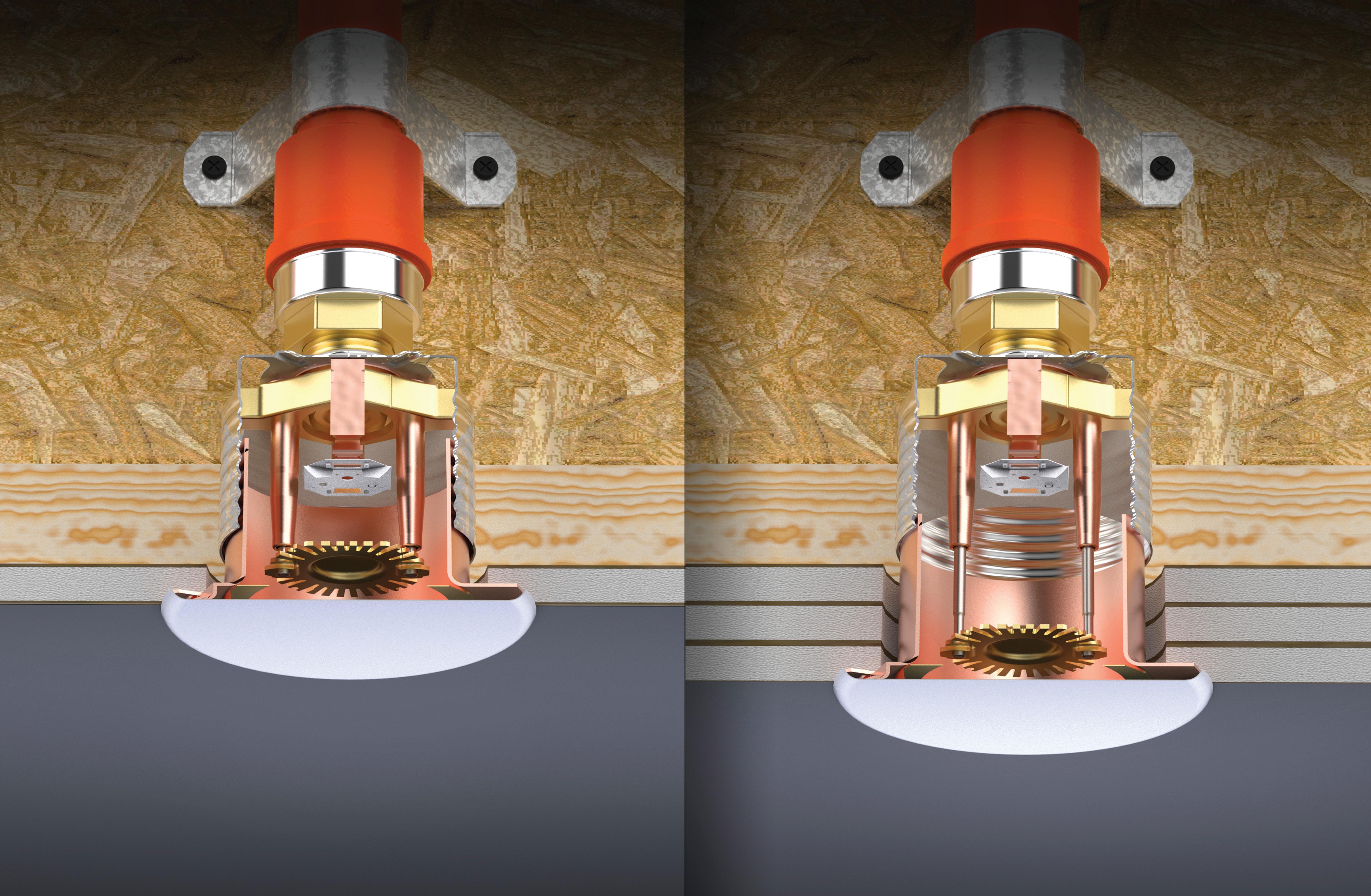
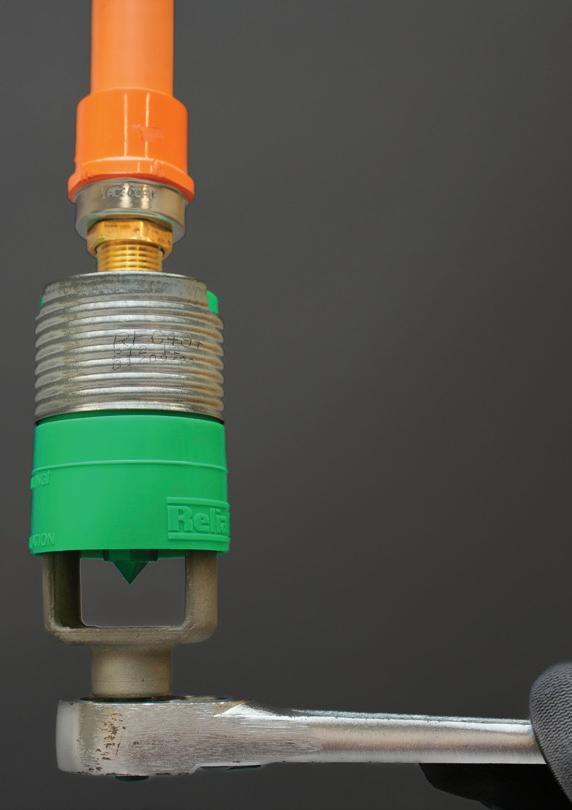
INSTALLER Now you can master the unexpected for whatever jobsite surprises might come your way. Introducing the Reliable ® RFC49plus Residential Flat Plate Concealed sprinkler. Great Reliable flows, now with a full 1" vertical cover plate adjustment. reliablesprinkler.com/RFCplus When you Expect the Unexpected Adjustme FULL25mm 212° 165° Ordinary Temperature Cap color indicates temperature Intermediate Temperature Wrenchable Cap

plus Adjustment FULL djustment 25mm
FRIENDLY RFC
connections and hose stations shall be unobstructed and shall be located not less than 3 ft (0.9 m) or more than 5 ft (1.5 m) above the floor,” which places the valve clearly above the 27-in. maximum elevation. For that reason, the location of the hose valve leading edge is limited to a maximum of 4 in. of horizontal projection into the path of egress. There are several sprinkler designers that have made sure that the standpipe itself is clear of the ADA curve but have failed to




account for the protrusion of the valve. Depending on the valves required for the project, the outlet connection, nipple, and valve can add as much as a 15-in. radius to the vertical standpipe. It is this outside radius measurement that will be used in identifying ADA infractions. It is a good practice to design and install the valves parallel to the stairwell walls, as shown in Figures 1 and 2, to minimize the projection into the egress path. When the space available is limited by landing size, it is a good idea to place the valve in the vertical position, as shown in Figure 4. This method reduces the valve’s radius of projection and can be helpful when the architectural features of the stair have limited the design options. However, it can have a significant impact on the hydraulic calculations.
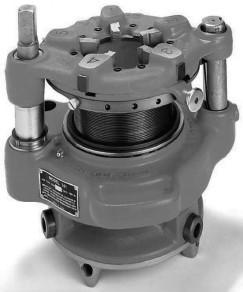
In conclusion, as larger municipalities continue to expand, the expectation is that there will be more vertical growth in structural construction due to more limitations on available property. This type of growth will lead to more standpipes in our construction infrastructure. The limitations placed on sprinkler contractors due to ADA requirements can prove to be expensive to correct late in a project. Careful examination of the building drawings is required to identify suitable standpipe locations and any obstructions that would interfere with the installation of the standpipe system and/or ADA compliance. n
ABOUT THE AUTHOR: Chris Kachura, P.E., is a major projects salesman and project manager for VSC Fire and Security, Houston, Texas. He has a Bachelor of Science degree in Mechanical Engineering and Physics from Texas Tech University, multiple licenses with the Texas Fire Marshal’s Office, and is a registered P.E. in Texas, Colorado, Delaware, Florida, Georgia, Louisiana, Kansas, Maryland, Missouri, New York, North Carolina, Tennessee, and Virginia. He is a member of the NFPA 30 Storage and Warehouse of Containers and Portable Tanks Committee, AFSA, NFPA, and SFPE.
26 SPRINKLER AGE | MAY/JUN 2023
Figure 3. Floor control valves are usually installed above the 80-in. minimum noted in the ADA and IFC standards.
Figure 4. When the space available is limited by landing size, it is a good idea to place the valve in the vertical position.
Available Sizes
SERIES 775
FIRELOCK ™ BUTTERFLY VALVE WALL POST INDICATOR ASSEMBLY

• 85% lighter than traditional wall post indicators, allowing for one-person installation
• Comes with preset visual indicators – No disassembly required
• Extendable tube for easy adjustments, eliminating the need for precision field cutting of steel tube
• No additional cost to purchase or install a tamper switch
ROOFTOP KIT
Available for applications where rooftop hose valves are required
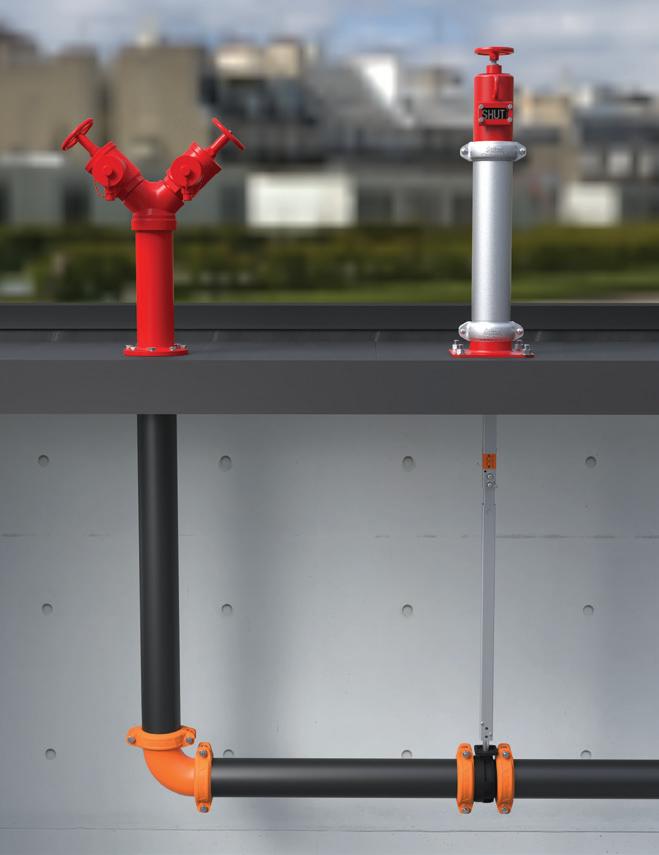
SCAN TO LEARN MORE © 2023 VICTAULIC COMPANY. ALL RIGHTS RESERVED.
2-4" | 6-8" | 10-12"
SACRAMENTO VALLEY TRADE SHOW SUCCESS
INDUSTRY EVENT OFFERS EDUCATION AND NETWORKING
The Sacramento Valley Chapter of the American Fire Sprinkler Association (AFSA) held its 11th Annual Training & Trade Show on March 9, 2023, in The Venue at Thunder Valley Casino Resort in Lincoln, California. This was the first trade show in the new space.


In the morning before the show, the chapter offered seminars presented by AFSA’s Vice President of Engineering & Technical Services, John Denhardt, P.E., FSFPE on “Sprinkler System Installation,” “Installation of Underground Obstruction Investigations vs. Internal Instruction,” “Corrosion in NFPA 25-2013 (CA)” and “Understanding Pump Components and Pump Room.” Sixty-eight members attended this training.
Afterward, the show opened at 3:00 p.m., hosting 49 exhibitors from all over the United States and Canada. Attendance was over 600 with contractors, designers, fitters, apprentices, office personnel, and fire personnel from all over the state. Attendees enjoyed the new flowing floor plan along with food, drinks, and a raffle with prizes awarded every 30 minutes. The main raffle prizes were an iPad, large television which was donated by First Service Insurance; and a trip to Hawaii for two with the winner being Roger Arrieta, an estimator for Pacific Valley Fire in Rancho Cordova, California.
The chapter board and committee enjoyed some very positive feedback on this year’s event. “The Sac Valley trade show is a must-attend event!” says Denhardt. “The number and quality of the
exhibitors is outstanding. The show draws many local sprinkler fitters and designers, which is critical for exposing them to the industry as a whole, as well as educating them on the newest products and innovations. As much of our core workforce ages out, we need more shows like this to energize and educate the next generation of fire protection professionals.”
“This trade show gets better every year,” comments Scott Harrison, Spears Manufacturing. “It allows us to make new friends and catch up with old ones. Everyone was in a great, positive mood to enjoy the camaraderie. The event confirmed how committed we all are in the process of saving lives and offered the opportunity to talk with more attendees in a short time than we do in events four times this size. There was a very enthusiastic crowd of attendees who really wanted to learn more about the products all of us had to demonstrate, particularly what was new.”
“The Sac Valley AFSA Trade Show is a can’t-miss event for anyone involved in the industry,” shares Matt Singes, Victaulic. “Sac Valley AFSA Chapter Executive Director Paulene Norwood and her team put on a world-class event.”
Tina Park, Easyflex USA, notes, “Once again, it was a great event as we connected with our industry friends and introduced new product updates. We understand the importance of preserving relationships in the fire protection industry and appreciate the opportunity to be part of the Sac Valley AFSA show year after year.”
28 SPRINKLER AGE | MAY/JUN 2023
Left and right photos: The trade show floor was packed with exhibitors and attendees who enjoyed networking, food, and drinks.
“This show is one of, if not the best, regional show in the industry. It’s not just that it is well-attended, which it is, but it’s the engagement and interest that the members bring. They aren’t just there to collect giveaways. The attendees genuinely want to learn what all the vendors are bringing to the industry. It is something we look forward to every year,” offers Clint Williamson, Reliable Sprinkler Company.
Accolades were received from Don Smith, First Service Insurance, “2023 was another great trade show led by the Sac Valley AFSA. Paulene and her team are truly on top of their game. We appreciate their friendship, business acumen, and leadership.”

A TRADITION OF SUCCESS
“Thank you to all our exhibitors, attendees, and staff for another successful show,” says Chapter Executive Director Paulene Norwood. “It is truly our chapter’s board and committee’s honor to present an event like this that promotes our industry and all it has to offer. This show would not be the success it is without a collective effort from all those involved. We look forward to continuing to offer this trade show as long as we can.”
For more information on the 2024 trade show and other chapter events, visit sacvalleyafsa.org or contact Norwood via email at paulenesacvalleyafsa@gmail.com. n

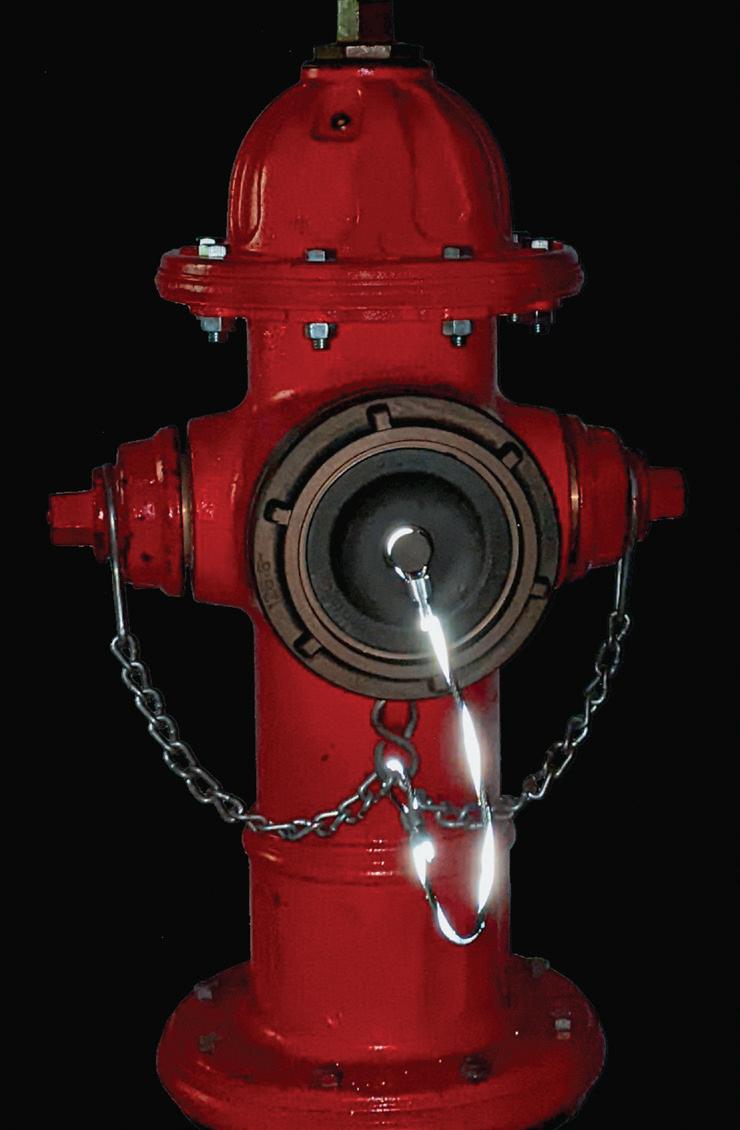

29 SPRINKLER AGE | MAY/JUN 2023
Hydrant Storz adapters, with metal face, permanently change main hydrant outlet from threads to Storz. Includes hard anodized adapter, cap with reflective stainless aircraft cable and stainless steel set screws to prevent unscrewing from the hydrant. New Reflective Cable Helps Locate Hydrant at Night Made in USA MAKE THE RIGHT CONNECTION! 2630 West 21st Street. Erie, PA 16506 • 800.553.0078 harrinc.com • info@harrinc.com • hydrantstorz.com HPHA - Storz Permanent Hydrant Adapters with Cap
Left photo, from left to right: Jordan Hopkins, chair of SVC AFSA, Elite Automatic Fire, congratulates Roger Arrieta of Pacific Valley Fire for winning the Hawaiian vacation for two. Right photo: Sacramento Valley Chapter members attended technical seminars before the trade show.
THE IMPORTANCE OF SEISMIC PROTECTION
WHY SO MANY RULES?
VICTORIA B. VALENTINE, P.E., FSFPE | AMERICAN FIRE SPRINKLER ASSOCIATION
The world is constantly changing. Currently, it seems there are more natural disasters than ever before, or at least the scale of events seems to be increasing. One of those prominent items is an earthquake. An earthquake is defined as “a shaking or trembling of the earth that is volcanic or tectonic in origin.” This ground motion can range from negligible to small (small vibration in built structures) to large (swaying of built structures).
Parts of the United States are very attuned to earthquake protection, such as California, Alaska, or the New Madrid fault (Midwest), while others rarely, if ever, use it. When working with mechanical systems or, more specifically, fire protection systems, all buildings do not require the application of the seismic protection criteria. So why do we have a chapter in NFPA 13, Standard for the Installation of Sprinkler Systems, dedicated to earthquake protection?
RECENT EARTHQUAKES
Smaller earthquake events are rarely discussed as the acceleration and forces caused from the ground motion are minimal with little impact on a structure designed to current U.S. building codes and standards. Larger earthquakes (for discussion purposes) based on their impact to structures are those with a magnitude of 6.0 or greater.
When searching the United States Geological Survey (USGS) for earthquakes 6.0M and larger since the start of 2018, there are 725 events that have occurred. Selecting a rectangular region around North America brings that event tally down to 59 events in the last five years with only 10 of those being within the 48 contiguous states. On average though, that is two significant earthquakes a year.
A devastating event draws public attention, such as the earthquake in Turkey on February 6, 2023, that had a 7.8M. This event, and the aftershocks, resulted in over 50,000 deaths and the devastation of buildings, neighborhoods, and cities. Tragedy often spurs modifications, updates, and changes to procedures, standards, and codes. The United States has not been free of such tragedy. See Table 1 for a list of the 10 deadliest earthquakes in the United States.
LIFE SAFETY SYSTEMS IN EARTHQUAKES
All fire protection systems are qualified as life safety systems. The codes and standards in the United States group these life
safety mechanical systems together to aid in the primary goal of keeping life safety systems operational following a seismic event. Remembering this goal can often help to apply any ambiguous regulations when the field-specific details are reviewed.
When identifying if earthquake protection is needed for fire protection systems, the requirements of ASCE/SEI 7, Minimum Design Loads and Associated Criteria for Buildings and Other Structures , are referenced by the model building codes. The seismic design category (SDC) is the key to determining the need for seismic protection. For mechanical systems, SDC A and B do not require seismic protection. SDC C through F require seismic protection.
NFPA 13 CRITERIA
For the scenarios that require earthquake protection, NFPA 13 has detailed information in Chapter 18. The approach is to secure the fire protection system by using the structure and its strength. This means that the system will have to move with portions of the building that are expected to bend and move to dissipate the earthquake energy. In addition, the systems are planned to be tight to structural components that move as a solid unit. Table 2 shows the breakdown for that information.
30 SPRINKLER AGE | MAY/JUN 2023
Location Year Magnitude Fatalities 1 San Francisco, CA 1906 7.9 3000+ 2 Unimak Island, AK 1946 8.1 159* 3 Prince William Sound, AK 1964 9.2 128* 4 Long Beach, CA 1933 6.3 115 5 Big Island, HI 1868 7.9 77 6 San Fernando, CA 1971 6.6 65 7 Loma Prieta, CA 1989 6.9 63 8 Valdivia, Chile – impact HI 1960 9.4 61* 9 Northridge, CA 1994 6.7 60 10 Charleston, SC 1886 6.9-7.3 60
Table
1. Ten deadliest earthquakes in the United States.
If you have experienced or seen video of buildings in earthquakes, there is a swaying that occurs with the force originating at the ground or base of a structure. Very little displacement occurs at the base in most cases, but the taller the structure the more movement (or horizontal displacement) can be seen. Simplistically, the walls and other vertical members bend and move while the floor/ceiling assemblies and other horizontal components remain solid and relatively horizontal.
Based on the expected movement, flexibility for protection from seismic loading is most common in vertical components of the system. Also, the rigid or solid connections are to the floor/ceiling assembly. Following this general method has shown good results in post-earthquake analysis.
Here are a couple of items that still need close attention when found in the field. First, pendent sprinklers and their interaction with the ceiling when subjected to earthquake forces. This is still one of the primary spots where damage can be seen following a significant earthquake. In some scenarios it is required to either use additional annular space around the sprinkler or flexible sprinkler hose to reduce the interaction of these components. However, restraint can also assist with reducing the interaction of a hard ceiling material and the sprinkler. Next, the fasteners used to connect the supports of the system, including sway bracing, and the structure are commonly a weak link. The capacity of the fasteners relates to the structural material to which they are connected. Steel, concrete, and wood all perform differently under earthquake stresses. The general load tables provided in NFPA 13 have seen major reductions since 2000 as the loads have been adjusted to more accurately reflect generic fasteners, how loads are applied (including prying factors), and the structural material capabilities. Remember, listed fasteners may have higher load capacities available.
FIRE PROTECTION SYSTEM RESILIENCY
Sustainability and resiliency are buzzwords of current construction arenas. NFPA 13 was credited a few years ago with looking beyond its primary function of fire safety because it contained criteria for earthquake protection since 1947. This demonstrates the holistic approach to creating buildings that will last and maintain the public health, safety, and welfare everyone has come to expect. It is important to step back occasionally and make sure the big picture goals are being met along with the details of sprinkler system installation.
In addition, the seismic community periodically conducts research that crosses many disciplines to replicate real-world building conditions. There have been a couple of Grand Challenge projects in the last 15 years. However, there is another one on the horizon. The University of California San Diego and Johns Hopkins are working with an industry partnership to put together another simulation that will also involve fire protection systems. This type of insight aids in future modifications to codes and standards as well as documents the performance of systems. Testing is expected in late 2024.
Table 2. NFPA 13 criteria for earthquake protection.
SUMMARY
Remember, the goal is for the sprinkler system to be operational following an earthquake. The prescribed details are to aid the fire protection systems in working with the building structure for the best possible outcome following an event. Although the frequency of earthquakes for most of the United States is small, being prepared for when it happens is still a priority. n
REFERENCES:
“Earthquake.” Merriam-Webster.com Dictionary, Merriam-Webster, https://www merriam-webster.com/dictionary/earthquake. Accessed 6 Apr. 2023. www.worlddata.info/asia/turkey/earthquakes.php
NFPA 13, Standard for the Installation of Sprinkler Systems, 2022 Edition. National Fire Protection Association, Quincy, MA. 2021.
USGS Search Results, US Department of the Interior, https://earthquake.usgs gov/earthquakes/map/?extent=-89.46938,-183.51563&extent=89.46938 543.51563&range=search&sort=largest&search=%7B%22name%22:%22Se rch%20Results%22,%22params%22:%7B%22starttime%22:%222018-01-01%2 00:00:00%22,%22endtime%22:%222023-04-06%2023:59:59%22,%22minmagni ude%22:6,%22orderby%22:%22magnitude%22%7D%7D. Accessed 6 Apr. 2023. www.wired.com/2008/11/gallery-deadly-earthquake
ASCE/SEI 7-22, Minimum Design Loads and Associated Criteria of Buildings and Other Structures. American Society of Civil Engineers, Reston, VA. 2022.
ABOUT THE AUTHOR: Victoria B. Valentine, P.E., FSFPE, is the director of engineering and technical services for the American Fire Sprinkler Association (AFSA). She has served the fire sprinkler industry and fire protection community for over 20 years. Valentine is a licensed professional engineer and a Fellow in the Society of Fire Protection Engineers (SFPE). Her education was pursued at Worcester Polytechnic Institute (WPI) achieving both a BS in Civil Engineering and a MS in Fire Protection Engineering. In addition, she has focused her career working with non-profit associations concentrating on professional qualifications, codes and standards development, and training programs to ensure quality in fire protection systems. Through her professional career, Valentine has written many publications and presented on fire protection systems to a wide variety of audiences. She continues to be involved with many organizations including the American Society of Civil Engineers, the National Fire Sprinkler Association, the National Fire Protection Association, and the Society of Fire Protection Engineers, among others. She also maintains efforts to engage the next generation in fire protection careers and support young professionals as they develop into the next leading experts.

31 SPRINKLER AGE | MAY/JUN 2023
Section Topic 18.1 General information 18.2 Flexibility using flexible couplings 18.3 Flexibility using seismic separation assemblies 18.4 Flexibility using clearance 18.5 Rigidity using sway bracing 18.6 Rigidity using restraint 18.7 Additional details for hangers 18.8 Additional details for pipe stands
AFSA WINS BIG AT NCC
MEMBERS TAKE HOME GOLD, SILVER, AND SAFETY AWARDS
SYDNEY RICHARDSON | AMERICAN FIRE SPRINKLER ASSOCIATION
Several members of the American Fire Sprinkler Association (AFSA) competed at the Associated Builders and Contractors’ (ABC) National Craft Championships (NCC) at the Gaylord Palms in Kissimmee, Florida, this past March. This year marked the 34th annual competition for ABC, and AFSA was pleased to learn its members nearly swept the competition. With a showcasing of nearly 200 of the nation’s top-performing craft professionals, it should come as no surprise that AFSA members rose to the top of the ranks.
ABC NCC WINNERS
Daniel Coticchio, a fourth-year fire sprinkler apprentice with AFSA Contractor Member Piper Fire Protection Inc., Clearwater, Florida, took the highest honor of the gold medal. “I appreciate a challenge, so this competition was right up my alley. Also, I knew it would be worth the experience,” Coticchio comments. “I had an idea I would be a finalist, but I competed with a lot of skilled competitors, so nothing was for sure.”
He continues, “Competitions like this one are important because it lets people have a chance to challenge themselves and showcase the skills they have accumulated through their apprenticeship.”
Coticchio’s gold medal gives Piper Fire its third gold medal since competing in this event, the first occurring in 2014 with Paul Gibson and then followed by Bryant Coffey in 2018, among other outstanding technicians who have brought home silver and bronze in those years as well.
“Piper Fire has a long history of striving to have the best trained and equipped team in Florida. Dan, Tyler, and
Jamie have made me super proud in their efforts to be world-class apprentices and journeymen,” comments AFSA At-Large Director Chris Johnson, president/ co-founder of Piper Fire Protection. “Piper has recently joined with Fortis Fire and Safety, and our mutual goal is to have all of our technicians be well-trained and ready to take on all types of work. My Co-Founder Rich Ennis and I are both very, very proud of these guys, and we look forward to seeing them advance their careers in our company!”
Jacob Utz, the 2023 silver medal winner, began his career as a fire sprinkler apprentice four years ago with Fusion Fire which was later bought by Redhawk Fire & Security during their acquisition by AFSA Contractor Member ADT Commercial.
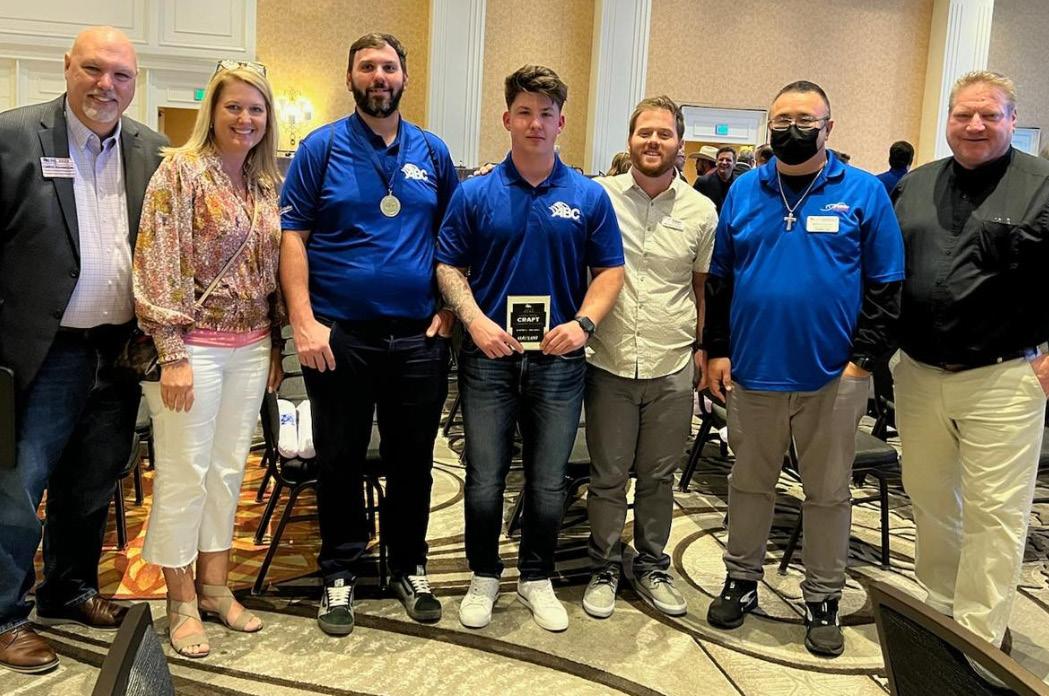
“After participating in a four-year apprenticeship with ADT Commercial, I
won the state competition in Maryland for ABC, and that pushed me to compete for the Craft Championships. Having the opportunity to compete at the national level was a huge motivation for me to further my knowledge and skills in the field,” Utz says. “These competitions are important because they help showcase the talent and technical ability of the next generation coming into the trade. Competition is healthy for the advancement of the industry, and it gives folks a chance to be recognized by their peers and industry leaders.”
“The best preparation for this competition, in addition to studying, was working in the field every day,” Utz continues. “The hands-on experience afforded by my apprenticeship helped me take my technical knowledge and apply it in a tangible way that made me feel even more prepared for the practical perfor-
32 SPRINKLER AGE | MAY/JUN 2023
Piper Fire Protection celebrated two wins at the NCC. From left to right: AFSA Director Chris Johnson, president/co-founder of Piper; Jennifer Plouffe, mother of Tyler Hester and corporate construction administration manager at Piper; Daniel Coticchio, gold medal winner; Tyler Hester, safety winner; Bryant Coffey, previous ABC NCC gold medal winner and current Piper employee; Mike Curinga, construction project manager at Piper and instructor for the ABC apprenticeship class; and Mike Corbett, Sarasota branch manager.
mance test for this competition. I also spent a lot of time after-hours on phone calls with Jeff Kempf, project manager for fire sprinkler installations at ADT Commercial, discussing different components and the operation of various valves.”
Matthew Eichner, Wiginton Fire Systems, Florida, received the bronze medal at ABC’s 2023 NCC.

Tyler Hester, also with Piper Fire Protection Inc., Clearwater, Florida, secured the safety plaque at ABC’s 2023 NCC. He has worked in the industry for six years and says that he first learned about it from his grandfather. “Growing up, I was always told that fire protection would never go away and it’s always guaranteed work. Plus, my grandfather started his own business in the profession. So, I’ve always been around the industry to begin with,” Hester says. “I’ve always loved the sense of pride I’d feel whenever completing a job/task.”
He continues, “I studied pretty hard. I’ve never been the greatest test-taker. I’m more of a hands-on-learning type of guy. For the hands-on portion of the competi-
tion, that was just an everyday thing I do at work. We also had to do a local competition to qualify for nationals. I think people in construction don’t really get the credit they deserve. I think these competitions give construction workers the opportunity to show off what they do for a living and why they’re the best.”
ABC NCC COMPETITION DETAILS
This year’s NCC showcased the skills and expertise of craft professionals, including carpenters, electricians, pipefitters, plumbers, welders, and more, all vying for top honors in 16 competitions with skills on display in 12 crafts. The competition also featured a team competition with journeylevel craft professionals from different crafts working to complete a joint project. The competition included a two-hour online exam and a six-hour practical performance test. To learn more about the 2024 NCC event, visit abc.org/Workforce/NCC.
AFSA NAC COMPETITION DETAILS
AFSA’s NAC is the premier event for the fire sprinkler industry and features the
NEW! HIGH PRESSURE
top seven fire sprinkler apprentices in the nation competing for tools, cash prizes, and bragging rights. Held during AFSA’s annual convention and exhibition, this year’s event will be held during AFSA42, September 6-9, in Orlando, Florida. For more information about the NAC, visit www.firesprinkler.org/competition. For more information about AFSA42, visit www.firesprinkler.org/AFSA42. n
EXPANSION JOINTS
The latest addition from the Metraflex Fire Protection Division is the UL Listed, all stainless-steel construction Fireloop® and FireVoop expansion joints.



▯ Constructed with 316 SS grooved end-fittings, available in just about any size or movement you could want.
▯ Allows for the use in corrosive environments such as underneath bridges, atop floating docks/piers, within tunnels, and other applications
▯ Utilizes Metraflex-exclusive high-pressure hose, giving it a 300 psi rating in sizes 1” through 6” diameter.
FireStrait flexible connector is also available in 316 SS construction for more demanding applications. Rated at 300 psi up through 6” diameter.

33 SPRINKLER AGE | MAY/JUN 2023
The Metraflex Company © 2023
www.metrafire.com • 1 855 FIRELUP
Jacob Utz with ADT (center), celebrated winning the silver medal with his parents Mark and Joy.
THE VALUE OF DIGITAL CODES AND STANDARDS
THROUGH DIGITAL INNOVATION, NFPA CONTINUES TO PUSH THE NEEDLE FORWARD IN FIRE AND LIFE SAFETY
KYLE SPENCER | NATIONAL FIRE PROTECTION ASSOCIATION
No matter how traditional an industry is, there will always be an immense opportunity in digital transformation. In a constantly evolving fire safety ecosystem that’s increasingly online, new digital innovations can help drive efficiency and growth. Adopting a new digital initiative may feel uncomfortable and confusing at first; in fact, some of the top roadblocks hindering more widespread digital adoption are resistance to change and hesitancies about training and onboarding. But when it comes to new technologies, persistence is key. Digital tools often solve more problems than they create, making them a critical aspect of safety and business success.
Amid this technological wave, the National Fire Protection Association (NFPA®) codes and standards have gone digital as well. The days of lugging around clunky code books are falling behind us, and we’re ushering in a new era where we have all codes and standards at our fingertips.
NFPA codes and standards play a critical role in the day-to-day tasks of fire safety professionals in all kinds of roles—making accessibility a key issue. But when it comes to accessing the codes and standards in the industry, it’s a mixed bag. Folks who prefer old-school methods turn to their physical code books. While this medium certainly grants you access to code text, it lacks some important functionalities that can make your job much more efficient and effective.
In the age of digital transformation, fire safety professionals need tools that were built for the 21st century. That means digital tools that enable real-time knowledge sharing, collaboration, and interactivity on any device, at any time. The fire systems sector is in the middle of the road when it comes to digital transformation—some are ahead, some are behind, and most have room for improvement—but there are simple digital tools that fire sprinkler contractors can leverage to make a big impact in the way they work and collaborate. Enter the NFPA’s digital hub for codes and standards content, NFPA LiNK®.
WHAT IS NFPA LiNK, AND WHY WAS IT CREATED?
NFPA LiNK is an application-based platform containing real-time code information and situational content. Subscribers can add personalized notes in addition to bookmarking and sharing specific sections of code. With the flexibility to be used online or offline via
mobile, tablet, laptop, or desktop devices, NFPA LiNK provides quicker access to crucial content while transforming the way codes and standards are delivered and leveraged to drive value.
People around the world have turned to NFPA codes and standards to do their jobs efficiently and effectively for more than a century, but in recent years, NFPA has seen a shift in the ways that people learn and do their jobs. Physical books or PDFs are not the best means to help solve problems on a real-time basis. Employees want to connect the dots on safety and glean realworld, real-time understanding.
These industry needs were the driving factors at the forefront of NFPA LiNK’s inception and launch in the Fall of 2020. From ideation to implementation, the entire web application was developed with humans in mind. There were multiple design tools and stakeholder-driven testing methods used to inform the development of the platform’s features and solutions, ensuring it would fit the needs of fire safety professionals. For example, one reason stakeholders love printed codes and standards is that they can take notes, add tabs, and highlight different sections within the codebook. Therefore, it was imperative the digitized version had the same functionality, plus additional capabilities to help drive efficiency and accuracy. This same user-first logic was used to inform many of NFPA LiNK’s functionalities and use cases, including:

34 SPRINKLER AGE | MAY/JUN 2023
Figure 1. An example of an NFPA LiNK dashboard.
Access to Multiple Publications and Editions with Visual Change Indicators – To do their jobs most efficiently, fire safety professionals need access to both current and legacy editions of NFPA codes and standards at the click of a button. NFPA LiNK provides digital access to over 1,500 codes and standards dating all the way back to 1993, in addition to offering a growing library of documents translated into Spanish. With advanced search features, users can search across publications and editions. And as a bonus: when new editions are added, all old highlights and notes transfer to the most current edition.
NFPA LiNK’s ability to update information in real-time has enabled tradespeople to perform their jobs to the best of their ability, and clear change indicators help identify exactly what has evolved between editions to ensure up-to-date accuracy. When there are updates between editions or tentative interim amendments (TIA) are released, NFPA LiNK immediately refreshes content and adds a change indicator, allowing subscribers to see what exactly has changed and share the information with their peers in real-time, thus preventing safety violations or miscommunication.
Added Situational and Visual Content – Interactive visual aids and supplementary content can bring the codes and standards to life. Much of the traditional NFPA handbook material is included in NFPA LiNK, in addition to expert commentary that’s exclusive to the platform. Within NFPA LiNK, users can access NFPA DiRECT®, which enables users to find content through situational navigation with industry-specific scenarios and interactive illustrations.
For example, if a fire inspector is assessing a fire pump, he or she can pull up a virtual fire pump in NFPA DiRECT to view pertinent highlights. The inspector can also click on any element of the fire pump to be linked directly to the relevant code content. NFPA LiNK is constantly updated with new visual and situational content to best meet the needs of fire safety professionals, helping them do their jobs effectively.
Streamlined Collaboration – The fire safety sector is inherently a collaborative profession. As such, the codes and standards need to exist
on a platform that enables collaboration. With a collaborative platform like NFPA LiNK, stakeholders can ensure they’re working from the same set of criteria from the onset. When in the same room, they can quickly search and pull up code from any NFPA publication on any device. When working remotely, they can share sections of code via email with one another (including non-subscribers) to ensure they’re working from the same code, thus avoiding confusion or inaccuracies. Plus, NFPA LiNK allows users to add notes in-line with code, create color-coded bookmarks, and build collections of those bookmarks to be shared across teams. These collections can then be leveraged to retain institutional knowledge amid mass retirements. NFPA LiNK’s personalized notes capability captures written insights from veteran tradespeople that can be accessed by entry-level workers to help them onboard. This future-proofed digital repository of industry wisdom can be leveraged for years to come, thus helping eliminate the generational knowledge gap.
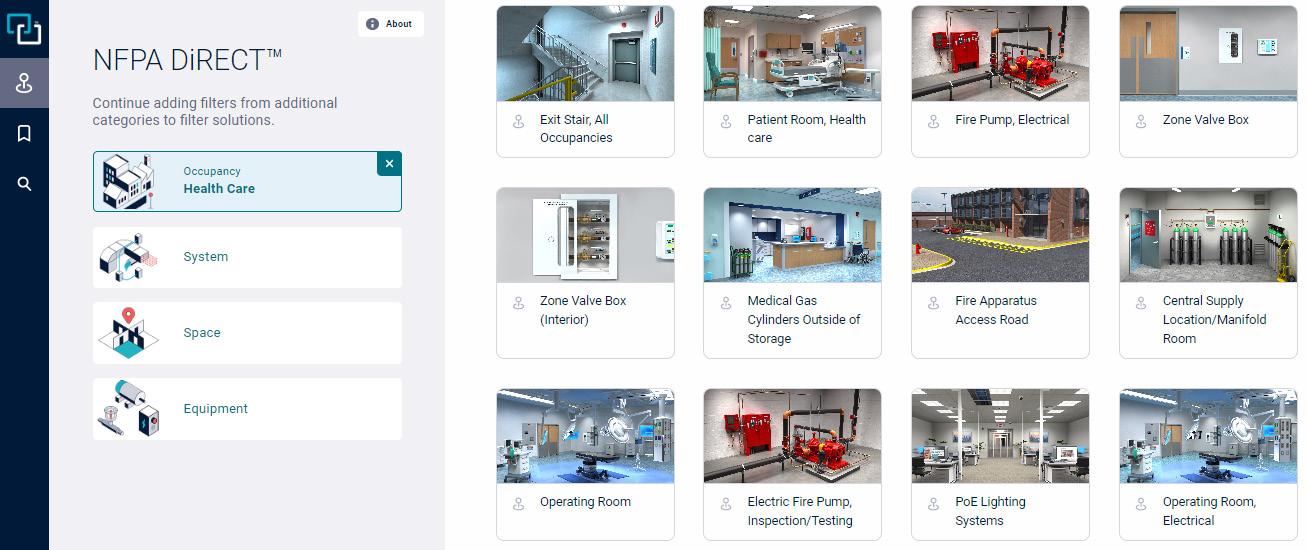
THE DIGITAL FUTURE
Incorporating digital tools within traditionally hands-on industries is all about enhancing what exists rather than completely overhauling traditional practices. By expanding the world of fire and life safety codes and standards far beyond physical code books and static PDFs, NFPA LiNK helps users better absorb and understand how codes are applied in the real world, resulting in fewer inaccuracies, less rework, and greater compliance. The importance of leveraging technology effectively lies within simplicity and value. NFPA’s approach to implementing NFPA LiNK was to create a tool that requires little to no training, is easy to navigate, and provides tangible value to daily operations— ultimately resulting in a higher quality of work and safety. n
ABOUT THE AUTHOR: For over three years, Kyle Spencer has been working alongside his peers at NFPA to develop NFPA LiNK®. Now serving as the director of NFPA LiNK®, he oversees the strategic direction for the application and helps support ongoing development and content creation efforts. Spencer has spent over a decade working in the electrical products industry, learning from engineers and installers on how to make the products they use more efficient.
35 SPRINKLER AGE | MAY/JUN 2023
Figure 2. NFPA DiRECT Situational Navigation.
HIGHER STANDARDS
As this issue of Sprinkler Age will be available at the annual NFPA Conference & Expo® in Las Vegas, this column will serve a special purpose. In preparation for the 2023 NFPA Technical Meeting, AFSA has reviewed the posted Certified Amending Motions (CAM) for the relevant standards on the Fall 2022 (F2022) and Annual 2023 (A2023) revision cycles and is providing a voting guide for our members as a special Higher Standards column.
NFPA 14, STANDARD FOR THE INSTALLATION OF STANDPIPE AND HOSE SYSTEMS
CAM 14-10 – Vertical Standpipe System Zones Beyond the Pumping Capabilities of the Fire Department Reject Second Revision No. 36
AFSA Position: SUPPORT
This CAM moves to reject SR-36. If the CAM passes, zones partially above the pumping capabilities of the fire department would not need to be provided with an FDC.
Zones partially beyond the pumping capabilities of the fire department do not need to be provided with an FDC. This cycle, there was a substantial effort to codify redundancy in very tall buildings that exceed the pumping capabilities of the fire department. Because the fire department’s capabilities are limited, the pressure discharged from the automatic water supplies will exceed the fire department’s pumping pressure, and the fire department will not be able to overcome the pressure differential in the check valve. While the fire department could theoretically partially supply a zone, it is not possible unless there is a failure of two automatic supplies. The presence of an FDC that feeds a zone that the fire department will never be able to supply adds an unnecessary cost to the system, and it is irresponsible to require a fire protection feature that provides no material value. While there are arguments that fire department capabilities may improve in the future, the purpose of a minimum standard is to supply the appropriate devices and appurtenances based on the criteria available at the time of design and installation.
CAM 14-14 – Lockable Hose Connection Caps
Accept an Identifiable Part of Correlating Comment No. 89


AFSA Position: WITHDRAWN
Lockable caps on standpipe hose connections pose a risk to fire and life safety where they are installed without adequate coordination with the appropriate stakeholders. Unless lockable hose caps are required by the Authority Having Jurisdiction (AHJ) and local fire department, lockable hose caps are not permitted, and their presence could delay the firefighting operations of the responding fire department and place the firefighter, building, and occupants at risk.
This CAM was initially submitted by AFSA to make sure that lockable hose connection caps could be installed on standpipe systems with AHJ approval. Based on the rules to submit a notice of intent to make a motion (NITMAM), the available language for consideration was limited. Fortunately, a task group was formed to address this issue through a tentative interim amendment (TIA). Based on the discussions during the task group meetings, this CAM has been withdrawn.
CAM 14-17 – Breach Control Valves

Reject Second Revision No. 28
AFSA Position: OPPOSE
This CAM moves to reject SR-28. If the CAM passes, the requirement that prohibits automatic breach control valves from being installed on standpipe systems would be removed.

36 SPRINKLER AGE | MAY/JUN 2023
From one manufacturer’s website, breach control valves are “designed to automatically isolate portions of distribution piping when a catastrophic downstream breach or line break occurs.” This is a great design feature for MEP infrastructure, but for water-based fire protection systems that function as a life safety system, it is paramount that essential devices used in those systems are listed for fire protection use. Large volumes of water may be necessary to control a fire protected by a deluge or preaction system, and there is no prescriptive guidance available to determine what the maximum acceptable flow might be in a water-based fire protection system. To date, there are no breach control valves that have been evaluated or listed for use in fire protection systems.
CAM 14-18 – Hose Connection Caps & Rated
Pressure
Reject Second Revision No. 35
AFSA Position: SUPPORT

This CAM moves to reject SR-35. If the CAM passes, the requirement for an 1 / 8 -in. or larger hole to be drilled into hose connection caps if the cap is not listed for the maximum pressure at the hose connection would be removed.
When installed on standpipe systems, hose connections are required to have their threads protected. There is no requirement to provide a cap on hose connection outlets. Additionally, brass hose connection caps that are found on hose valves are not evaluated as part of the listed assembly, and there are several other options on the market to protect hose threads that do not require mechanically altering a component in the field. The Technical Committee cites that there are concerns with cap failures if subject to pressure from an open hose valve, but negative comments on the second revision cite that there is no supporting data and that it is unclear whether the additional orifice should be provided by the manufacturer or the installer. While there is a concern that deficient hose valves could leak by and create pressure between the gate and the cap, the requirement for a “listed” cap is too strong and the cap should only need to be rated for the maximum pressure at the hose connection. AFSA supports this CAM so that better language can be developed for the next edition of NFPA 14.
OTHER CAMS
NFPA 14 is not the only standard being debated at the NFPA Technical Meeting, but it is the only standard for which AFSA has developed official positions because the standard is relevant to our membership. For the other standards with motions being debated at the technical meeting, AFSA encourages voters to listen to the debate on the other CAMs and cast an informed vote.
2023 NFPA ANNUAL CONFERENCE & EXPO®
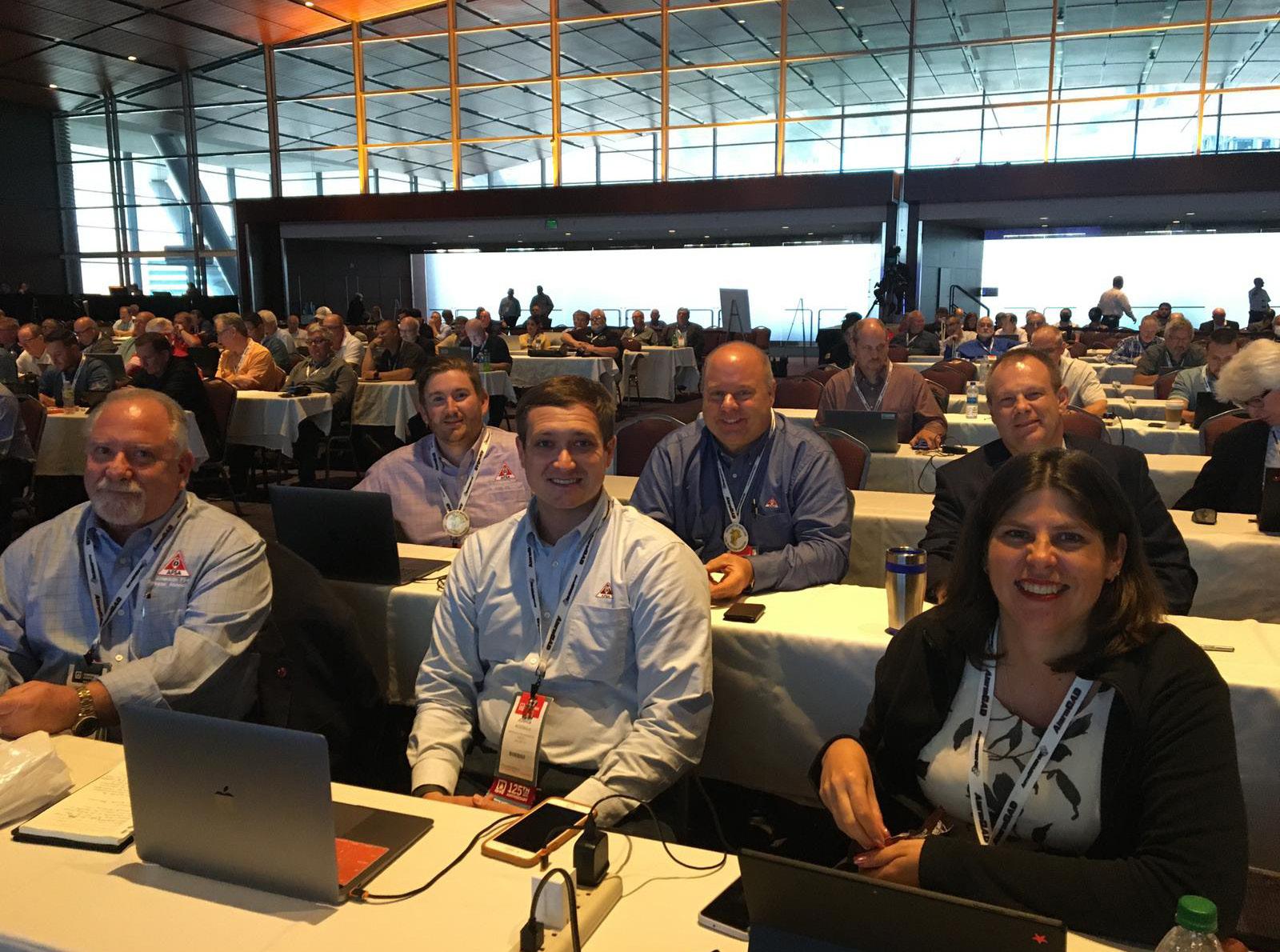

The Technical Meeting will begin on Thursday, June 22, 2023, at 8:00 a.m. with the presentation of committee

service and special achievement awards. Afterward, presentation and debate of CAMs will begin. If needed, the meeting may continue on Friday, June 23, 2023, to allow additional time for full debate and action. According to the NFPA website, final details of the Technical Meeting scheduling, as well as the full agenda of all CAMs to be debated and acted upon each day, will be posted online at www.nfpa.org/ Events/Events/Technical-Meeting once finalized by the Motions Committee on or before May 9, 2023.
In addition to AFSA’s technical services staff’s participation in the Technical Meeting, we will be alongside AFSA’s membership team in the AFSA booth in the expo hall. Feel free to stop by and discuss a technical topic, ask a membership question, or just to say hi. Last year, our team answered several Technical Reviews right on the expo floor! We look forward to seeing our members there. Visit nfpa.org for more information and to register for the conference. n
37 SPRINKLER AGE | MAY/JUN 2023
KEVIN HALL, M.ENG, P.E., ET, CWBSP, PMSFPE AFSA SENIOR MANAGER OF ENGINEERING & TECHNICAL SERVICES
AFSA President Bob Caputo and the Engineering & Technical Services Department staff participated in the 2022 NFPA Technical Meeting and will participate once again in the 2023 meeting.
CALENDAR
JUNE 2023
19-21
• NFPA Conference & Expo® Las Vegas, NV nfpa.org
22-23
• NFPA Technical Meeting Las Vegas, NV nfpa.org
28-29
• Fire Sprinkler Hydraulic Calculations Workshop Exton, PA
www.firesprinkler.org/calendarevent/sprinkler-hydrauliccalculations-workshop-4
JULY 2023
6
• Proposed Updates to NFPA 13R, 13D Online Webinar
www.firesprinkler.org/live-webinars
AFSA NEWS
VALENTINE APPOINTED TO NFPA STANDARDS COUNCIL
AFSA’s Director of Engineering & Technical Services Victoria B. Valentine, P.E., FSFPE, has been appointed to the National Fire Protection Association® (NFPA®) Standards Council by the NFPA board of directors. She began serving a three-year term effective January 1, 2023.

The NFPA Standards Council is comprised of 13 members. The responsibilities of the council include overseeing NFPA standards development activities, ensuring compliance with the NFPA Regulations and Rules, and serving as the appeals body over matters related to standards development.
HALL APPOINTED TO ASSE 15000 COMMITTEE
19
• ITM of Standpipe Systems (CAL-FIRE) Online Webinar
www.firesprinkler.org/live-webinars
24-26
• Hands-On Course for ITM of Water-Based Fire Protection Systems
General Air Products Training Lab, Exton, PA
www.firesprinkler.org/calendarevent/hands-on-coursefor-inspection-testing-maintenance-of-water-based-fireprotection-systems-2
31-8/4
• Training Course For ASSE 15010 Certification Dallas, TX
www.firesprinkler.org/calendarevent/training-course-forasse-15010-certification
AUGUST 2023
2
• NFPA 25 Roles and Responsibilities Online Webinar www.firesprinkler.org/live-webinars
16
• Reviewing Fire Pump Reports Online Webinar www.firesprinkler.org/live-webinars
14-25
• Beginning Design School www.firesprinkler.org/programs/beginning-fire-sprinklersystem-planning-school
SEPTEMBER 2023
6-9
• AFSA42: Convention, Exhibition & Apprentice Competition www.firesprinkler.org/AFSA42
AFSA Senior Manager of Engineering & Technical Services Kevin Hall, M.Eng, P.E., ET, CWBSP, PMSFPE, has been appointed to the ASSE 15000 Fire Protection Committee. He is also involved in the exam development for the 15010 certification class and ASSE 15000 qualification standard.

ASSE’s Technical Committees are advisory committees that provide technical guidance to the various ASSE professional certification programs. Each committee is made up of subject matter experts from the industries served by that certification program. Members review and approve the program guidelines, exam questions, practical exams, and equivalent certifications. In addition, subcommittees may also may also include subcommittees to review and approve applications for training providers, instructors, and proctors.
AFSA is an ASSE-approved provider of the 15010 certification course. More information on the class can be found online at www.firesprinkler. org/programs/training-course-for-asse-15010-certification.
VISIT WITH AFSA AT NFPA CONFERENCE & EXPO ®
Several staff members of AFSA will be attending NFPA’s annual Conference & Expo® June 19-21, 2023, in Las Vegas. AFSA President Bob Caputo, CFPS, and Vice President of Engineering & Technical Services John Denhardt, P.E., FSFPE, will both be there to represent the interests of AFSA members at the Technical Meeting. You also have the opportunity to attend a seminar presented by AFSA staff, including Senior Manager of Engineering & Technical Services Kevin Hall, M.Eng, P.E., ET, CWBSP, PMSFPE; and Director of Engineering & Technical Services Victoria Valentine, P.E., FSFPE. Also, stop by AFSA’s booth in the expo hall to visit with AFSA’s Membership team: Senior Director of Membership & Chapter Development Meda Merritt and Regional Director of Membership Services & Chapter Support Dominick Kasmauskas, CFPS. AFSA’s Chair of the Board Jack Medovich, P.E., with Summit Companies, will also be in attendance.
Seminars subject to change. Call (214) 349-5965 to confirm locations and times. For more events and details, visit firesprinkler.org and click on “Events” and “Events List.”
And don’t forget to attend the NFPA Technical Meeting if you are a voting member of NFPA! AFSA has provided a voting guide on page 36 of this issue. For more information and to register for the conference, visit nfpa.org. n
38 SPRINKLER AGE | MAY/JUN 2023
CHAPTER NEWS
SACRAMENTO VALLEY
AFSA’s Sacramento Valley Chapter held its 11th Annual Trade Show in Lincoln. There were 650 attendees at the trade show, with over 50 vendors present. Prior to the trade show, Sacramento Valley hosted chapter training with Victaulic’s Charlie Landreth, AFSA’s Vice President of Engineering & Technical Services John A. Denhardt, P.E., FSFPE, and AFSA Director of Education Leslie Clounts. Victaulic also sponsored the chapter training lunch. See page 28 of this issue for full event details and visit sacvalleyafsa.org.
TENNESSEE
AllStar Fire Protection of Nashville and Chattanooga, along with the AFSA Tennessee Chapter and AFSA national, were the sole active-fire-protection representatives representing the fire sprinkler industry at the annual Tennessee Building Officials Association vendor area. AllStar’s Casey Milhorn is the AFSA Tennessee Chapter president and educated many visitors on what AFSA is and does, including a building inspector for a major international hotel chain, the Tennessee State Fire Marshal and his many deputies in attendance, and many building inspectors. AllStar’s team worked their educational alarm and fire sprinkler display with visitors. AFSA Regional Director of Membership Services & Chapter Support Dom Kasmauskas, CFPS, talked about AHJ memberships and chapter training opportunities coming in October. Visit afsatennesseechapter.org.
VIRGINIA
The Virginia Chapter will host its 2023 AFSA Virginia Chapter/Burn Survivors Foundation Golf Tournament October 10-11. It will be an exciting 30th anniversary event with two days of celebration and fun, including a casino/dinner night. The tournament will be held once again at the Williamsburg National Golf Club. Visit virginiaafsa.com or burnsurvivorsfoundationva.org n
ASSOCIATION NEWS
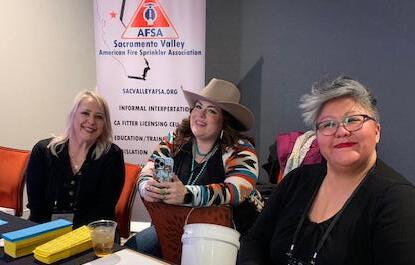
FSCATX
In April, the Fire Sprinkler Contractors Association of Texas (FSCATX) held a series of fire pump training days in Houston, Austin, and DFW. John A. Denhardt, P.E., FSFPE, AFSA vice president of engineering and technical services, led the instruction. Gold sponsors of this event included American Fire Systems, Inc., Ameripipe Supply, BlazeMaster Fire Sprinkler Systems, Core and Main, Ferguson Fire & Fabrication, Reliable Automatic Sprinkler Co., Inc., Victaulic, Viking Supply Net, and Total Pump Solutions. Act Fire & Supply was the silver sponsor, and American Fire Supply and Potter Electric Signal Company, LLC, were the bronze sponsors. Visit fscatx.org. n
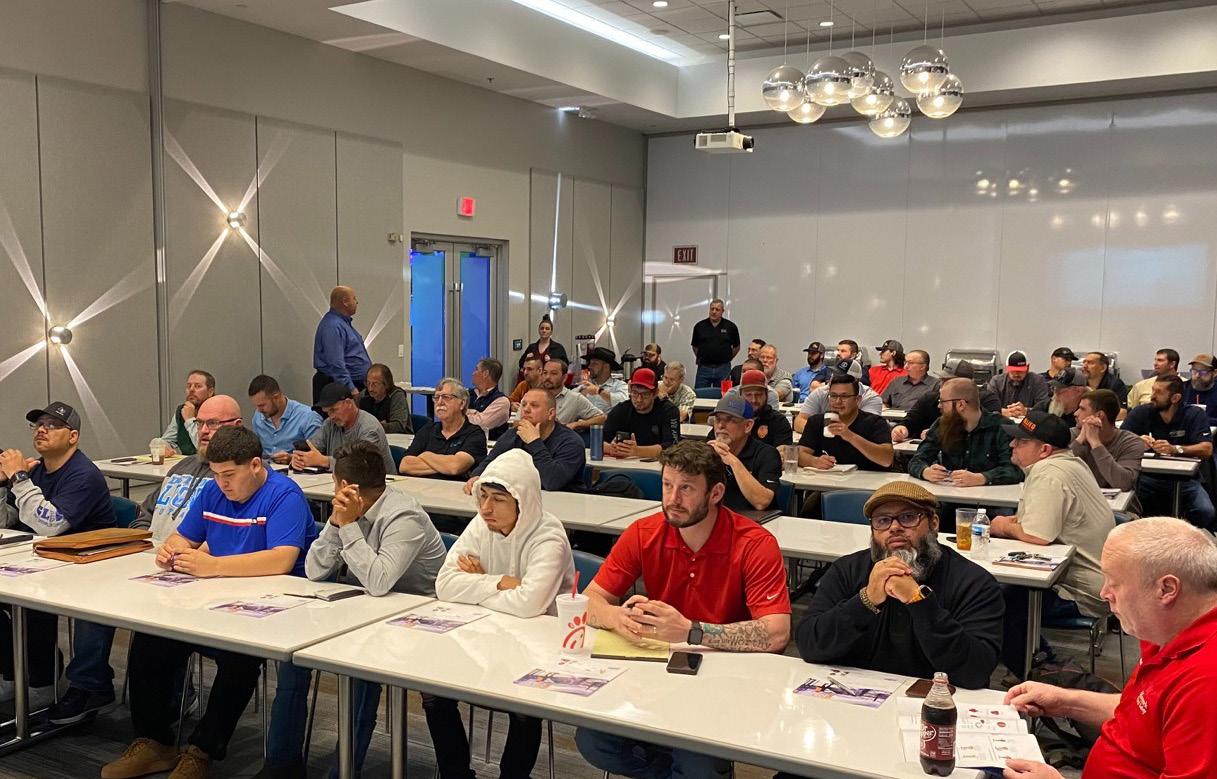


39 SPRINKLER AGE | MAY/JUN 2023
1
2 4 2 3
Photo 1: Tennessee Chapter members at the Tennessee Building Officials Association’s Conference (from left to right): Cody Carmon, Casey Milhorn, Chad McElyea, Blake Hooper, Kyle Lewis, and Mikey Hicks. Photo 2 (from left to right): Krystle Horak, Melissa Norwood, and Amanda Scuka helped make the Sacramento Valley Chapter’s Trade Show a great success. Photo 3: FSCATX hosted three training days across the state in April. Photo 4 (from left to right): FSCATX Dallas training attendees included AFSA’s Eric Andresen and John August Denhardt, Zurn Industries’ Megan Goode, American Fire System’s Jim Yarish, and AFSA’s Josh McDonald.
AFSA CHAPTERS
ALABAMA alfiresprinkler.org
Hunter Brendle – Pres. 334-270-8571

Greg Willis – Exec. Dir. 334-567-4257
ARIZONA
Jason Williams – Chair 480-421-8411
ARKANSAS
Dennis Morrall – Pres. 901-734-4796
Coleman Farrar – Exec. Dir. 479-461-3863
CAROLINAS afsacarolinaschapter.com
Jason Graham – Chair 919-533-2356
John Turnage – Exec. Dir. 919-624-3456
CHESAPEAKE BAY afsachesapeakechapter.org
Jason Martin – Chair 240-848-2710
Danielle Fowler – Exec. Dir. 410-972-1122
COLORADO afsacoloradochapter.org
Roger Wallace – Chair 719-337-6550
Kim Cook – Exec. Dir. 704-213-4368
CONNECTICUT afsact.org
Rick Russo, Jr. – Chair 203-877-7983
DALLASFORT WORTH afsadfwchapter.org
CJ Bonczyk – Chair 817-529-1693
FLORIDA afsafl.org

Bob DiModica - Chair 239-514-7155
Jessica Cox – Exec. Dir. 813-784-3624
GEORGIA georgiafiresprinkler.org
Allen Cagle – Chair 770-554-5285
Taylor Johnson – Exec. Dir. 770-484-1112
GREATER BAY AREA afsa-gba.org
Dave Karrick – Chair 925-417-5550
Alicia Karrick – Exec. Dir. 510-398-9185
GREATER KANSAS CITY
Mark McKenzie – Chair
913-432-6688
Brett Heinrich – Exec. Dir. 785-825-7710
ILLINOIS-INDIANA
Skyler Bilbo – Chair
217-342-2242
Mitch Bortner – Vice Chair 206-348-0078
LOUISIANA lfsa.wildapricot.org
Randy Laguna – Chair 504-464-6236 ext 224
Ellen Ballard – Exec. Dir. 318-688-8800
MICHIGAN afsamichiganchapter.org
Doug Irvine, Jr. – Chair 616-784-1644
AFSA AFFILIATE MEMBERS




OKLAHOMA AFFILIATE ofsa.info
Tim Hollon – Pres. 918-851-2416
TEXAS AFFILIATE fscatx.org

David Stone – Pres.
713-466-9898
Sarah Kiefer – Exec. Dir. 512-844-6632
MINNESOTADAKOTAS
Marc Huag – Chair 701-232-7008
Tina Hoff – Exec. Dir. 701-799-1899
NEW JERSEY
Thomas Bowlby, Jr. – Chair 908-226-5313
Victor Lugo – Exec. Dir. 201-635-0400
NEW MEXICO
Paul Chavez – Chair 505-898-9197
Jeriod Towery – Vice Chair 505-410-4007
OHIO afsaohio.wildapricot.org
Bill Hausmann – Chair 937-859-6198
Scott Huber – Exec. Dir. 513-942-1500
PACIFIC NORTHWEST afsanw.org
Chris Russell – Chair 360-734-4940
Ron Greenman – Exec. Dir. 253-576-9700
PATRIOT afsapatriot.org
Chad Dubuc – Chair 508-431-9938
SACRAMENTO VALLEY sacvalleyafsa.org
Jordan Hopkins – Chair 916-672-8415
Paulene Norwood – Exec. Dir. 916-296-0635
SAN DIEGO
Scott Uren – Chair 858-722-1470
Rhonda Gudger – Exec. Dir. 951-326-4600
SCHUYLKILL afsasc.org
Christopher Campion, Jr. –Chair 732-798-0911
Meaghen Wills – Exec. Dir. 610-754-7836
SOUTH CAROLINA scfsa.org
Nikki Ray – Chair 864-207-8545

Ashley McAdams – Exec. Dir. 864-561-408
SOUTHERN CALIFORNIA socalafsa.com
Jeff Bridges – Chair 941-413-0526
Vahe Zohrabian – Exec. Dir., Treasurer 818-734-4796
TENNESSEE afsatennesseechapter.org
Casey Milhorn – Chair 615-349-5278
David Pulliam– Exec. Dir. 901-484-0605
UPSTATE NEW YORK afsaupstatenychapter.org
Justin Petcosky – Chair 607-296-7969
UTAH ROCKY MOUNTAIN afsautahchapter.org
Mark Winder, Jr. – Chair 385-630-8064
Brent Heiner – Exec. Dir. 801-544-0363
VIRGINIA virginiaafsa.com
Bob Beckwith – Chair 540-659-4675
Steve McGee – Exec. Dir. 757-544-0520
40 SPRINKLER AGE | MAY/JUN 2023
Florida Virginia Texas (Affiliate) Dallas Fort Worth Southern California Georgia Oklahoma (Affiliate) Minnesota-Dakotas Arkansas Louisiana Alabama New Mexico Utah Colorado San Diego Arizona Greater Bay Sacramento Valley Michigan Schuylkill Ohio Indiana-Illinois gia South Carolina Carolinas Tennessee Connecticut Upstate New York Chesapeake Bay Greater Kansas City New Jersey Patriot NorthernNewEngland Pacific Northwest
AFSA NEW MEMBERS
New members as of April 30, 2023
CONTRACTORS
Active Fire Protection Services, LLC
Memphis, TN
Beacon Fire Protection, LLC
Round Rock, TX
Friendly Fire Systems, Inc.
Oakley, CA
Grand Strand Fire Sprinkler of SC, Inc.
Conway, SC
Interior Sprinkler Systems, Inc.
Windsor, CO
Marco Fire Protection, LLC
Naples, FL
Mount Diablo Fire, LLC
Concord, CA
Sack Company Statesboro, GA
Shore Point Fire Protection
Wall Township, NJ
SoCal Fire Protection
Sylmar, CA
Solomon Plumbing
New Hudson, MI
Village Fire Protection, LLC
Merrimac, MA
ASSOCIATES
Fireflex Systems, Inc.
Boisbriand, PQ
DESIGNERS
Eagle Design Benton, LA
AHJS
Akilian Ananth, Los Gatos, CA
Brian Baird, Miami, FL
Chris Baker, Bartlett, TN
Kristina Barnett, Flagstaff, AZ
Andrew Bennett, Charlotte, NC
Joe Biggy Jr., Paramus, NJ
Kevin Black, Oxford, MS
Gerald Bova, Schenectady, NY
Reed Bullock, Piperton, TN
David Castillo, Stanford, CA
Jerry Clark, Moffett Field, CA
Brian Danby, Naugatuck, CT
Michael DeRosa, West
Greenwich, RI
Kevin Dozier, Weatherford, TX
Aaron Easter, Norman, OK
Kevin Esposito, Charlotte, NC
Peter Eugenio, Stanford, CA
Colen Fegan, San Diego, CA
Scott Fleischer, Doylestown, PA
Ralph Foster, Norfolk, VA
Edward Garrison, Collierville, TN
Keith Garrison, Collierville, TN
James Garvey, Fargo, ND
Fred Golnaraghi, Pasadena, CA
Wesley Graham, Charlotte, NC
Josh Hale, Collierville, TN
Pablo Hernandez, Mesa, AZ
Salvatore Izzo, Indian Land, SC
Dwayne Jackson, Santa Fe, NM
Steven Jenkins, Columbia, SC
Todd Jenkins, Carpinteria, CA
Emory Johnson, New Orleans, LA
Jeff Johnson, Fuquay-Varina, NC
Ricky Johnson, Stanford, CA
David Jones, Pacific Grove, CA
Peter Lattanzio, Albany, Ny
Yong-Sung Leal, Stanford, CA
Loy Leffingwell, Arlington, TN
Todd Letterman, Irvine, CA
Jason Lopez, Stanford, CA
Luis Martinez, Ventura, CA
Michael McDonald, Renssealer, NY
Aaron Miller, Centennial, CO
Armen Minatsaghanian, Pasadena, CA
Aaron Murg, Oceanside, CA
Timothy Nicholson, Dunkirk, MD
Christian Oseguera, Stanford, CA
Joshua Owens, Lexington, NC
Bryan Parks, Bethesda, MD
Lauritz Rasmussen, Albany, NY
Jeff Sceili, Centennial, CO
Bob Scholly, Jr., Glenside, PA
Christopher Schwendiman, Burien, WA
Brandon M. Smoke, Akwesasne, NY
William Stewart, Oxford, MS
William Timmons, Rochester, NY
Jesus Torres, Stanford, CA
Thomas Van Leuven, Sussex, NJ
Anna Wakefield, McKinney, TX
Jeff Werre, Goodyear, AZ
Kevin Whitney, Closter, NJ
Rich Wilkins, Stanford University, CA
Jamal Williams-Bey, Wichita, KS
Jason Ziph, Ames, IA
41 SPRINKLER AGE | MAY/JUN 2023
U.S. CONSTRUCTION REPORTS
TOTAL CONSTRUCTION JUMPS IN MARCH
Total construction starts increased 19 percent in March to a seasonally adjusted annual rate of $1.09 trillion, according to Dodge Construction Network. During the month, nonresidential starts rose 33 percent, nonbuilding starts increased 17 percent, and residential starts moved 5 percent higher.
In Q1 of 2023, total construction starts were 9 percent below that of 2022. Year-to-date, residential starts were down 29 percent, while nonresidential and nonbuilding starts grew 6 percent and 12 percent respectively. For the 12 months ending March 2023, total construction starts were 11 percent higher than the 12 months ending March 2022. Nonresidential and nonbuilding starts were 33 percent and 21 percent higher, respectively, while residential starts lost 11 percent.
“Construction starts activity has yet to see the impact of tightening financial conditions in the wake of the failure of Silicon Valley and Signature Banks,” said Richard Branch, chief economist for Dodge Construction Network.
“Several large manufacturing projects are breaking ground; pushing nonresidential buildings higher, while a nascent recovery in single family starts has been supporting residential growth. Construction starts began the year with gusto, but that is likely to erode as the year progresses, as seen by the declining trend in the Dodge Momentum Index, which tracks projects entering the earliest stages of planning.” n
MONTHLY SUMMARY OF CONSTRUCTION CONTRACT VALUE
TOTAL CONSTRUCTION MOVE HIGHER IN FEBRUARY
Total construction starts rose 6 percent in February to a seasonally adjusted annual rate of $912.8 billion, according to Dodge Construction Network. During the month, residential and nonresidential building starts rose 11 percent and 9 percent respectively, and nonbuilding starts declined by 5 percent.
For the first two months of 2023, total construction starts were 17 percent below that of 2022. On a year-over-year basis, residential starts were down 31 percent, nonresidential starts were off 14 percent, while nonbuilding starts gained 6 percent. For the 12 months ending February 2023, total construction starts were 9 percent higher than the 12 months ending February 2022. Nonresidential and nonbuilding starts were 27 percent and 19 percent higher respectively, while residential starts lost 9 percent.
“February construction starts were a mixed bag that led to marginal growth,” said Richard Branch, chief economist for Dodge Construction Network. “Single family units posted a gain for the first time in 13 months, and manufacturing starts continued to be very robust, showing signs of promise early into 2023. However, the downturn in commercial and institutional building starts could very well be the beginning of an anticipated slow-down as the construction sector pulls back in the face of higher interest rates and lagging economic growth. While this ebbing should be comparatively mild, some construction verticals could face extreme stress as the year progresses.” n
42 SPRINKLER AGE | MAY/JUN 2023
Prepared by Dodge Data & Analytics MONTHLY CONSTRUCTION STARTS Millions of Dollars, Seasonally Adjusted Annual Rate Mar 2023 Feb 2023 % Change Nonresidential Building $492,423 $369,178 33 Residential Building $335,006 $318,491 5 Nonbuilding Construction $262,875 $225,012 17 Total Construction $1,090,304 $912,681 19 THE DODGE INDEX (2000=100, Seasonally Adjusted) March 2023......................231 February 2023..................193 YEAR-TO-DATE CONSTRUCTION STARTS Unadjusted Totals, in Millions of Dollars 3 Mos. 2023 3 Mos.2022 % Change Nonresidential Building $91,172 $85,999 6 Residential Building $78,313 $110,363 -29 Nonbuilding Construction $55,400 $49,546 12 Total Construction $224,885 $245,908 -9
SUMMARY
Prepared by Dodge Data & Analytics MONTHLY CONSTRUCTION CONTRACT VALUE Millions of Dollars, Seasonally Adjusted Annual Rate Feb 2023 Jan 2023 % Change Nonresidential Building $367,909 $337,452 9 Residential Building $319,731 $288,556 11 Nonbuilding Construction $225,113 $236,996 -5 Total Construction $912,753 $863,004 6 THE DODGE INDEX
Seasonally Adjusted) February 2023....................183 January 2023..................... 193 YEAR-TO-DATE CONSTRUCTION STARTS Unadjusted Totals, in Millions of Dollars 2 Mos. 2023 2 Mos. 2022 % Change Nonresidential Building $50,786 $58,910 -14 Residential Building $47,139 $68,691 -31 Nonbuilding Construction $33,692 $31,743 6 Total Construction $131,617 $159,345 -17
MONTHLY
OF CONSTRUCTION CONTRACT VALUE
(2000=100,
TECHNICAL CHALLENGES
CAN YOU MEET THE CHALLENGE?
Each issue, AFSA’s Engineering & Technical Services Department staff present technical challenges. Besides testing yourself and your co-workers, these exercises are excellent preparation for professional certification tests and may count as CEUs. Check with your certification organization. To participate, read through and work the problems. Answers to this issue’s questions will be presented in the next issue.
MARCH/APRIL ANSWERS
The following questions are based on NFPA 20, 2022 edition.
1. What are the minimum NFPA 20 requirements for the maximum load of a centrifugal pump?
A. 100 percent of rated capacity at 50 percent of its rated head
B. 150 percent of rated capacity at 65 percent of its rated head
C. 175 percent of rated capacity at 75 percent of its rated head
D. 150 percent of rated capacity at 150 percent of its rated head
NFPA 20-2022, Section 6.2.1 requires that pumps must furnish not less than 150 percent of rated capacity at not less than 65 percent of total rated head.
2. Which of the following is true regarding diesel fuel tanks?
A. The fuel tank for a diesel driver must be below ground.
B. NFPA 20 requires that single-wall tanks be equipped with a spill containment system.
C. Diesel fire pumps can use any type of liquid fuel.
D. Fuel tanks should contain at least a two-hour supply of fuel at all times.
Per NFPA 20-2022, Section 11.4.1.4.4, single-wall fuel tanks must be enclosed with a wall, curb, or dike sufficient to hold the entire capacity of the tank.
3. What nominal size automatic relief valve is required to be installed on an electric drive fire pump with a rated capacity of 3,000 gpm?
A. 0.75 in.
B. 1 in.
C. 6 in.
D. 10 in.
Per NFPA 20-2022, Section 4.13.1.7, the automatic relief valve must have a nominal size of 1 in. for pumps with a rated capacity of 3,000 to 5,000 gpm.
4. Which of the following terms describes a building where the system demand exceeds the pumping capacity of the fire department?
A. Modular building
B. Mid-rise building
C. Very tall building
D. High-demand building
See the definition in NFPA 20-2022, Section 3.3.81, Very Tall Building. A high-rise building where the fire protection water demand exceeds the pumping capacity of the fire department.
5. Which of the following is true regarding a pressure maintenance (jockey) pump?
A. Jockey pumps are not required to be Listed.
B. Copper pipe must be used for suction and discharge piping on pressure maintenance pumps.
C. Isolation valves are not required with pressure maintenance pumps.
D. Jockey pumps must be the turbine type.
Per NFPA 20-2022, Section 4.27.2, pressure maintenance pumps are not required to be Listed, but must be approved.
MAY/JUNE QUESTIONS
The following questions are based on NFPA 14, 2019 edition.
1. What is the minimum clearance around standpipe valve handles outside of a cabinet?
A. 1 in.
B. 3 in.
C. 6 in.
D. 12 in.
2. What is the minimum height for a standpipe hose connection per NFPA 14?
A. 12 in.
B. 18 in.
C. 24 in.
D. 36 in.
3. When the maximum pressure in a new standpipe system is 180 psi, the system must be hydrostatically tested at?
A. 170 psi
B. 200 psi
C. 230 psi
D. 250 psi
4. Which of the following is true regarding the location of Class I standpipes?
A. Standpipes may be located in locked housekeeping closets to prevent tampering.
B. Standpipes must be located in hallways of public buildings.
C. Standpipes may be located anywhere in the building at the discretion of the installer.
D. Standpipes must be located in a fire-rated exit stairway or equivalent (where available).
5. Assuming the building is fully sprinklered, the minimum flow capability for the hydraulically most remote standpipe for a Class I combined standpipe system is?
A. 500 gpm
B. 750 gpm
C. 1,000 gpm
D. 1,250 gpm
43 SPRINKLER AGE | MAY/JUN 2023
PRODUCT NEWS
SFPE INTRODUCES ETHICS COURSE
The Society of Fire Protection Engineers (SFPE) announces a new one-hour course on ethics for fire protection engineers. Based on the SFPE Code of Ethics, this on-demand course titled “SFPE Introduction to Ethics for Fire Protection Engineers” provides an overview of ethics, the importance of ethics to engineers, and the ethical obligations of a fire protection engineer. The course includes actual ethical challenges faced in the field, guidance on identifying conflicts of interest, plus several case studies. This course is intended for all career and knowledge levels of engineering professionals, with a specific focus on fire safety professionals. The course has been developed to comply with many states’ requirements for continuing education credits and engineering ethics training; the course is eligible for 1.0 Professional Development Hour (PDH). Visit www.sfpe.org/ethics-course.
C-AIRE RELEASES NEW COMPRESSORS
figurations: S164, S163, S253, and S418. The S164 fire protection air compressor features C-Aire’s Digital Air Maintenance Device Gen-3 with leak detection. The Digital AMD allows users to properly set the system pressure in seconds! It comes factory set at 10 to 20 psi and is adjustable from 5 to 55 psi. C-Aire’s patent-pending leak detection shows techs and owners how many times the system has run in the past 24 hours and seven days. This is a quick and easy way to quantify how leaky a system is.

The three other models feature preset pressure switches instead of the Digital AMD, which are suited for specific dry pipe valves. The S163 model comes with a pressure switch set at 30-40 psi, which makes it compatible with all standard pressure differential dry pipe valves. C-Aire’s S253 model is

sure switch. The S418 model is specifically designed for Victaulic’s FireLock NXT™ Dry Pipe Valve with a pressure switch set at 13-18 psi. With their ultra-compact design and patented quick riser mount system, installation is easier than ever. All four models are ETL Listed and NFPA 13 compliant for applications in the U.S. and Canada. Visit cairecompressors.com.
RIDGID® INTRODUCES INDUSTRYFIRST DIGITAL SELF-LEVELING REEL

RIDGID®, a part of Emerson’s professional tools portfolio, introduces the first reel of its kind to provide digital self-leveling with no moving parts, the SeeSnake® Mini Pro Inspection Camera with TruSense® Technology. It is the latest reel in the RIDGID portfolio of inspection and drain cleaning tools, each designed to complement each other and provide the strongest breadth and depth of products to help meet the toughest jobsite challenges.
The small, yet rugged Mini Pro is designed to inspect up to 200 ft of 1.5- to 8-in. pipe with its mid-flex push cable that can navigate hard 90-degree bends. Its 25 mm digital self-leveling camera always keeps the in-pipe image upright and is shorter than the traditional 25 mm camera head.
TruSense establishes a two-way datalink between the camera head and a TruSense enabled monitor. With TruSense, advanced sensors on the camera head convey valuable information about the in-pipe environment, including the high-dynamic range (HDR) image sensor that offers bright, clear in-pipe imaging in difficult lighting conditions. The TiltSenseTM Inclinometer measures the camera’s angle and displays the degree of tilt on the monitor—giving professionals a useful indicator of the pitch of the camera in-pipe. Digital zoom/pan provides the ability to focus on a single point of interest for a better understanding and view of what’s happening in the pipe. The Mini Pro is backed by the manufacturer’s RIDGID full lifetime warranty. Visit RIDGID.com. n
PEOPLE IN THE NEWS
IN MEMORIAM: DAVID NABORS
Members and staff of AFSA were saddened to learn of the passing of David Nabors. He was the co-owner of A&A Fire and Safety Company, Cabot, Arkansas, as well as the vice president of sprinkler operations with a NICET Level IV certification. He was the past president and past vice chair of the board of the AFSA Arkansas Chapter. Services were held on May 1 in Cabot, Arkansas.
SFPE ANNOUNCES JELENEWICZ, P.E., FSFPE, AS INTERIM CEO


The Society of Fire Protection Engineers (SFPE) announces Chris Jelenewicz, P.E., FSFPE, as interim chief executive officer. He joined the staff of SFPE in 2004 and succeeds Nicole Boston, CAE, who served as SFPE’s CEO from October 2013 through April 2023. Jelenewicz has most recently served as the Society’s chief engineer, holds degrees in fire protection engineering and management from the University of Maryland, and is a licensed professional engineer in fire protection engineering. A Fellow of SFPE, Jelenewicz is a well-respected and trusted industry leader and will be responsible for the society’s staff and programs. Visit sfpe.org.
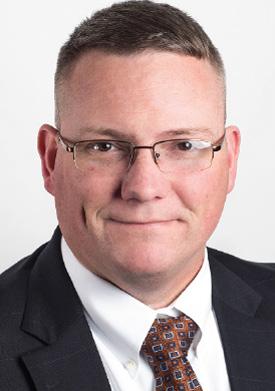
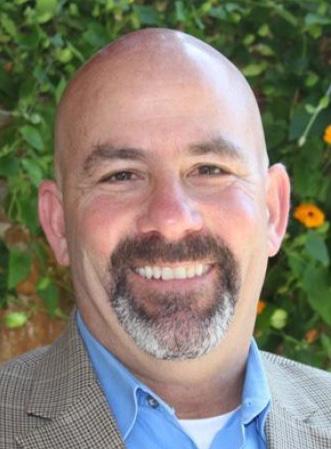
GOETZ NAMED PRESIDENT OF WILCON
Andrew Goetz has been named the new president of Wilcon Corporation, a Winsupply Company, effective April 17, 2023. He joins Wilcon with nearly three decades of experience in the construction industry. Goetz spent most of his career with Shook Construction, most recently serving as executive vice president of building construction. In this role, he made significant
contributions to the company’s success by leading education, healthcare, and industrial projects that have helped grow the Dayton area and beyond. Some notable projects include the GE Aviation EPISCenter, Community Tissue Services, and Levitt Pavilion.
For the past 45 years, Wilcon has provided millwork, metal building, and design-build construction services and will continue to do so under Goetz’s guidance. Winsupply is excited to begin working with him and continue their long-standing partnership with Wilcon. Visit wilconcorp.com.
FPRF ANNOUNCES PAISS AND SMITH AS ITS NEWEST TRUSTEES

The Fire Protection Research Foundation (FPRF or Foundation), the research affiliate of the National Fire Protection Association® (NFPA®), has announced the selection of two new trustees: Matthew Paiss, technical advisor in the Battery Materials and Systems group at Pacific Northwest National Laboratory (PNNL) and Denise L. Smith, Ph.D., professor of Health and Exercise Sciences at Skidmore College. The FPRF
is a separate, independent, nongovernmental organization with its own officers and nine trustees. The Foundation’s team of five effectively plans and manages more than four dozen projects at any given time and communicates findings in support of the NFPA mission. Over the last 40 years, FPRF research reports have been downloaded by safety-focused practitioners in more than 160 countries. Projects cover everything from fire suppression systems, emergency response, public policy, public education, detection and signaling, industrial hazards, wildfire, electrical, and building safety. Visit nfpa.org. n
GET ON TRACK
HINGED
CUTTERS
• Invented by REED, hinged cutters track well for square cuts.
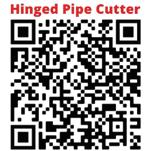
• Just 4" (102 mm) clearance around pipe.

• Use anywhere — in the ditch, underwater, overhead and in racks of pipe.
• Efficient handle swing of only 90–110 degrees.
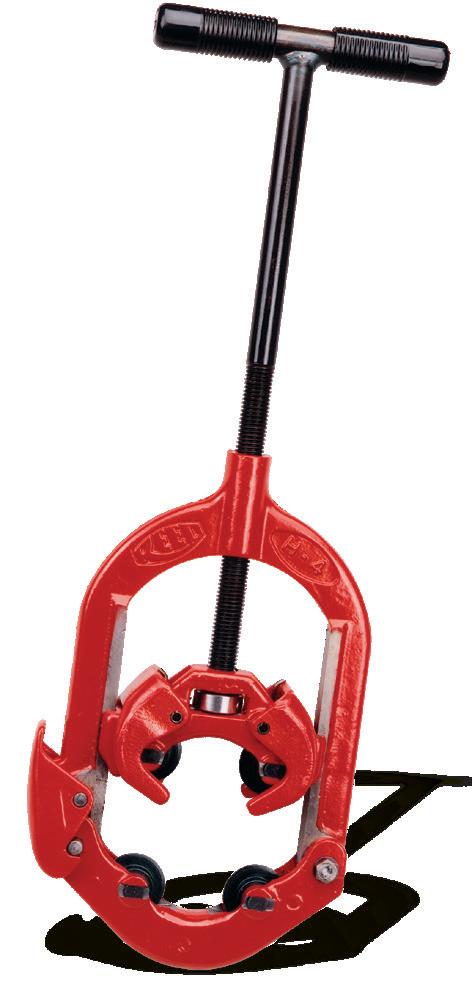
45 SPRINKLER AGE | MAY/JUN 2023
PAISS SMITH
Reed Manufacturing • Erie, PA USA reedsales@reedmfgco.com • www.reedmfgco.com H4S
MMIC FOR GROUP HEALTH INSURANCE
If AFSA members still have a group health insurance plan renewal this year, consider enrolling in a new group plan. Today, there is an array of insurance programs available to address the needs of small employers. These plans vary depending on what part of the country you live in.
Small group health insurance policies continue to provide PPO options with a large network of providers, unlike individual health insurance policies that have a limited network of hospitals and doctors. Secondly, group policies are not subject to open enrollment periods.
With over 25 years of experience in the small group health insurance marketplace, MMIC Insurance can provide plans to fit the needs of employees and budgets. To obtain a no-cost, no-obligation quote for any of these group health insurance options, submit information via mobile phone at www.mmicinsurance.com, click “Menu,” and then click “How to Receive A Quote;” via email at MMIC at quotes@mmicinsurance.com; or via phone by calling MMIC toll-free at 1-800-349-1039.
NFPA 2023 CONFERENCE & EXPO®
The National Fire Protection Association (NFPA) will host its annual Conference & Expo® at the Mandalay Bay Convention Center in Las Vegas June 1921, 2023. This comprehensive event brings together thousands of the industry’s leading professionals who will attend more than 110 educational sessions addressing the latest issues, challenges, and trends in the world of fire, electrical, and life safety.
Featuring more than 300 exhibitors, the expo brings the products and services needed to help meet and maintain compliance with prevailing codes and standards in the design, construction, and operation of buildings and facilities of every kind. A series of pavilions, presentations, and special events will address specific topic areas.
The NFPA Spotlight on Public Education will be held June 19-20, covering a wide range of public education issues. The NFPA Technical Meeting will begin on June 22 and will continue on June 23, if necessary. Visit NFPA.org.
WINSUPPLY NAMES AWARD WINNERS
Winsupply, Inc. has named Winsupply San Antonio Tx Co. its overall company of the year. The Fire Fab category’s top-performing company is Newburgh Windustrial Supply Co. (N.Y.), led by Presi-
dent James B. Lucas. Each year, Winsupply recognizes its top-performing companies in plumbing, heating, ventilation and cooling (HVAC), industrial, electrical, waterworks, pumps, turf irrigation, and fire fabrication. Visit winsupply.com for more topperforming and individual award winners.
SFPE’S PE EXAM REVIEW COURSE
Registration is open for the Society of Fire Protection Engineers’ (SFPE) first 2023 Principles and Practice of Engineering (PE) Fire Protection Exam Review Course. The course is taught by 12 expert instructors with backgrounds across all areas of fire protection engineering. All courses are live, online, and offered twice weekly beginning in June 2023, with recorded sessions available on-demand afterward. Additional review sessions, online discussions, practice problems, and office hours with the instructors are included. Visit SFPE.org.
NFPA LiNK LAUNCHES YOUTUBE CHANNEL AND APP ENHANCEMENTS
The National Fire Protection Association® (NFPA®) NFPA LiNK YouTube channel will complement NFPA LiNK by providing users with supplemental content, enabling them to maximize the use of the application. In tandem, new product features mark another step forward in streamlining workflows that help users in all aspects of building, design, and construction.
Additionally, three recent code change indicators added to NFPA LiNK enable users to easily view and understand NFPA code changes: Change Summaries offer expert insight into code revisions instated since the prior edition; Interactive Change Indicators make it easier for users to identify and understand these updates and deletions from edition to edition; and TIA Change Indicators inform users of code amendments made since the publication was released. A new expandable and collapsible Table of Contents enables improved navigation within the NFPA LiNK application. This upgrade streamlines navigation between chapters, articles, and annexes within the interactive publications. This new feature also includes Bookview, enabling users to navigate the entire publication without exiting the screen. Visit NFPA.org.
SFPE FOUNDATION AWARDS GRANT
The SFPE Foundation announces the funding of research into the integration of Building
Information Modeling (BIM) for the design, verification, and maintenance of proper fire protection systems in buildings. The research is led by Principal Investigator Stephen Roth, P.E., president and chief technology officer at Carmelsoft. The primary objective of the research is to identify opportunities to update and develop new fire protection engineering data repositories that are available to all interested parties while also identifying interoperability requirements that will help more fire protection engineering software tools better integrate with BIM. In addition, the research aims to identify opportunities for improved toolsets and workflows that integrate with BIM, with the end goal of making it easier for all stakeholders to design, verify, and maintain proper fire safety systems in buildings. The findings of the study are expected to be presented at the SFPE Annual Conference & Expo in Washington DC/Bethesda, in October 2023. Visit sfpe.org/foundation n
46 SPRINKLER AGE | MAY/JUN 2023
INDUSTRY NEWS
AGF MANUFACTURING, INC. 15 ARGCO 22, 36 BAVCO 13 BULL MOOSE TUBE 9 DUYAR 44 EASYFLEX IBC EATON’S TOLCO 18 FAYETTE PIPE 17 FERGUSON FIRE & FABRICATION, INC. 7 GENERAL AIR PRODUCTS, INC. 3 HARRINGTON 29 JOHNSON CONTROLS 4 METRAFLEX 33 REED MANUFACTURING CO. 45 RELIABLE AUTOMATIC SPRINKLER CO. IFC, 24-25 U.S. TOOL 26 VICTAULIC 27 VIKING CORPORATION 19 WATTS WATER 11 ADVERTISERS



 SIGNIA BY HILTON BONNET CREEK
SIGNIA BY HILTON BONNET CREEK
CONVENTION, EXHIBITION & APPRENTICE COMPETITION
EXPERIENCE THE AFSA MAGIC
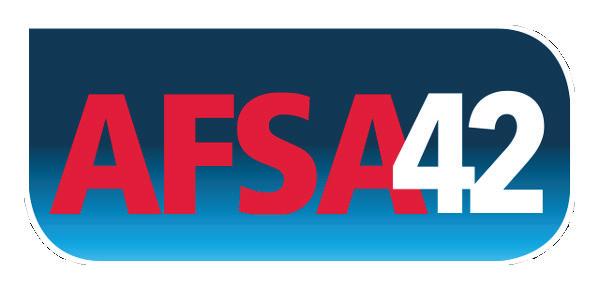

SEP 6-9 2023
ORLANDO
Registration
JUNE1
Opens






























 JOHN AUGUST DENHARDT, P.E., FSFPE AFSA VICE PRESIDENT OF ENGINEERING & TECHNICAL SERVICES
JOHN AUGUST DENHARDT, P.E., FSFPE AFSA VICE PRESIDENT OF ENGINEERING & TECHNICAL SERVICES






















































































 SIGNIA BY HILTON BONNET CREEK
SIGNIA BY HILTON BONNET CREEK

